The Environment
of the Month

Spirit Away from Ghibli Studio
Animated Film

In this first release, I am going to bring the environments of one of those films that found a place in your head and stay in its room forever.

- Source: Ghibli’s Film
- Title: Spirited Away
- Origin: Koganei, Tokio (Japan)
- Directed and written by: Hayao Miyazaki
- Release Date: 20th of July 2001 (Japan)
- WEB https://www.ghibli.jp/
I remember when I saw the footage for the first time, almost two decades ago, and at that time I did not imagine that it would leave such an imprint on me.
The film has such narcotic music that rocks you in a changing plot that, like its settings, plays with you until it completely hypnotizes you and leaves you swaying to the sound of a baton that is not yours; You have not understood the movie very well, but you leave satisfied because in some way you know that you have witnessed a work of art.

Table of Contents
The Entrance
We begin with the entrance to the dream world of Miyazaki, which well commence in a waiting room, a purgatory, sober, cold and disconcerting. It uses gothic columns that connect with all its neighbours through arches without nerves, naked walls and classic European chandelier lamps that somehow make the atmosphere rarer by showing you a kind of totally bare chapel with benches that look in both directions, breaking with what one is used to see.
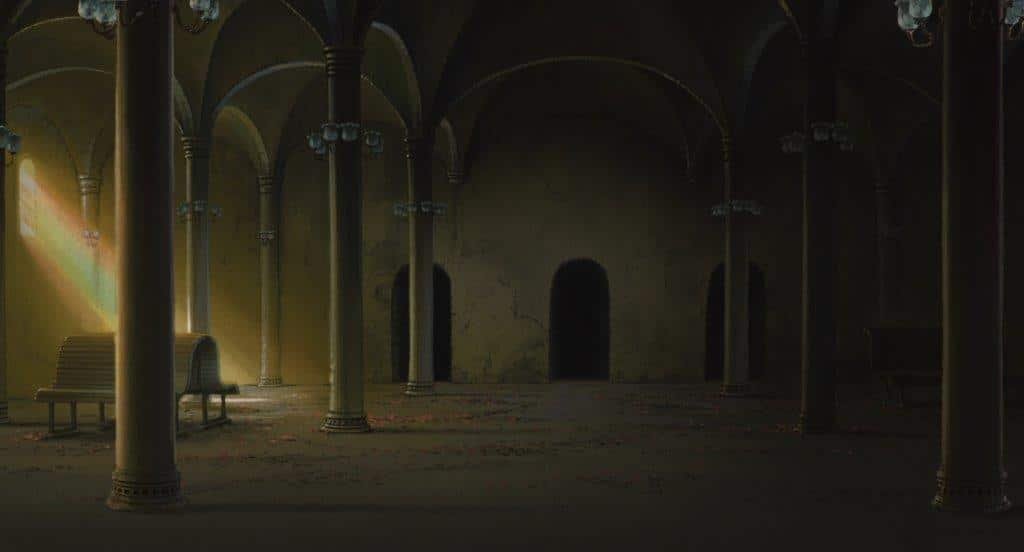
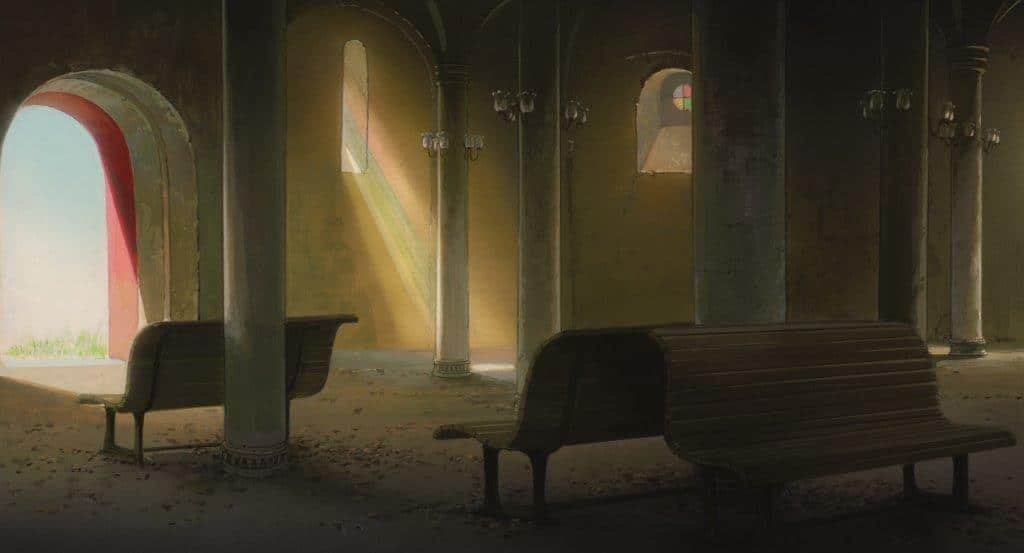
We are in an unholy place that has a severe lack of light finally strangled by defensive skylights plugged with simple stained glass, stay ready perhaps for a more hectic nightlife.

The building that houses this melancholy is covered in red and peculiarity. Low-profile walls and defensive windows culminate in the clock tower that strikes the time on its four sides, similar to the Sapporo tower in Hokkaido but with a more French-style roof (Mansard) with very pleasant curvatures mixed with the use of Japanese joinery.
It is interesting to see how the roof does not point upwards on its edges as in the roofs of the Chinese government palaces that their Asian neighbours later inherited; It is curious to see how these forms are reserved for the Bathhouse that we will see later.
I am fascinated by the central projection of the building that covers the clock, which is dressed with asymmetrical section, and is covered by a Kyoto-style vaulted ceiling. The upper middle section of the building is, in my view, charming.

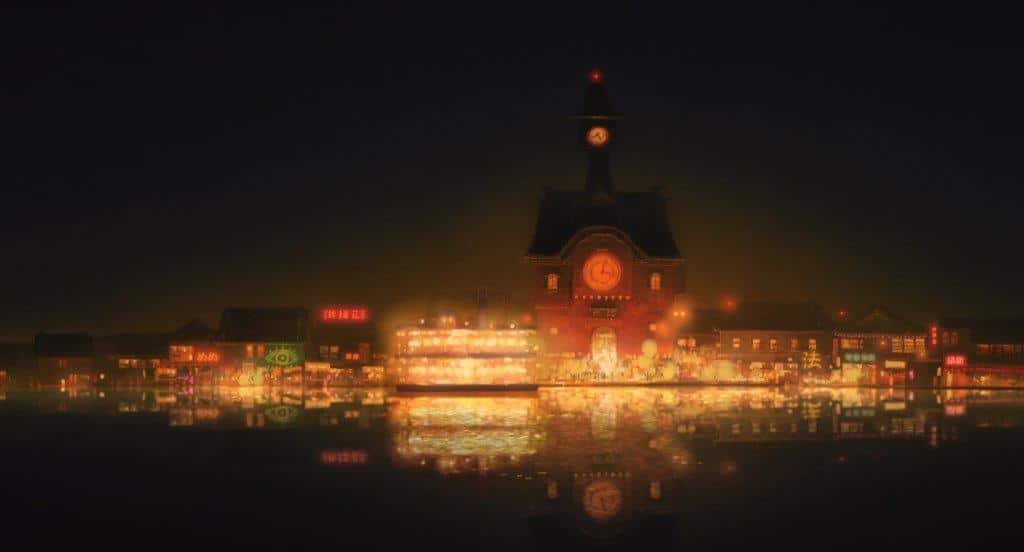
When night falls, the building that at first seemed isolated, becomes the center of a bustling village, full of light and activity, from where the ship sales to the Bathhouse every night.

The Bathhouse (Onsen)
The central building in the film is simply majestic; It correlates with the one seen above but expands on different levels using the use of Xiesham-style roofs (hip-and-gable roof) with golden motifs, which champion luxury, transcendence, prosperity, importance and timelessness.
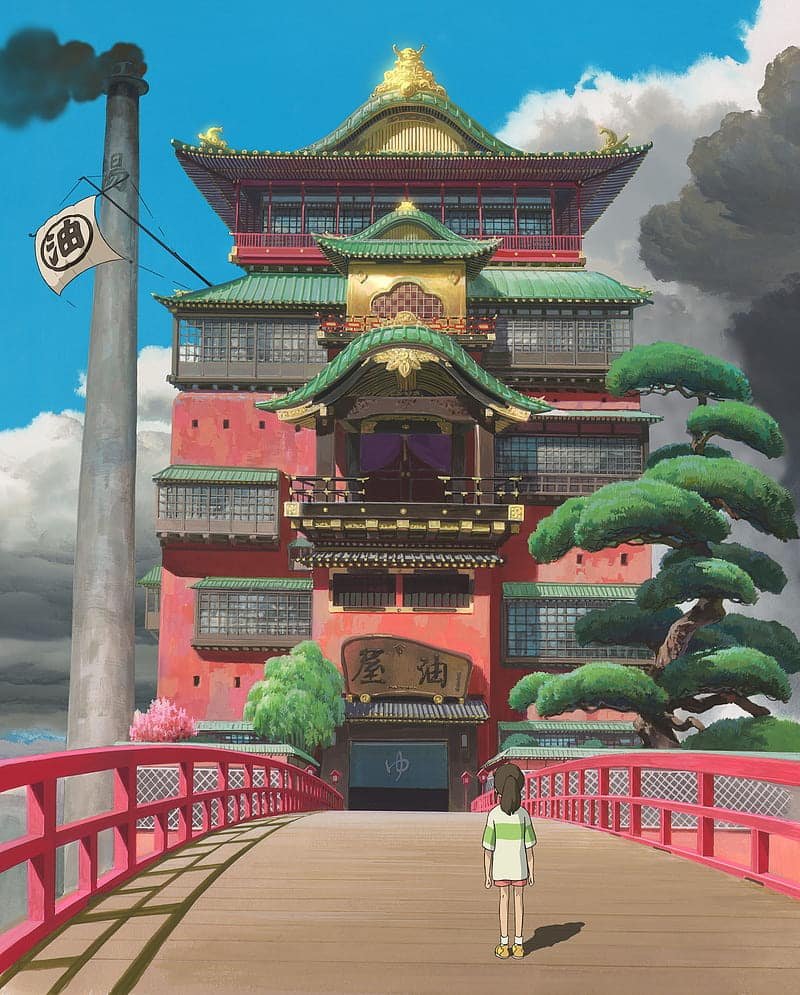
We can see how the Bathhouse is located between a very industrial chimney and a giant imperial bonsai at the other end, allowing the place to emerge as a point of communion between both contenders.
Predominance of balconies that range from small, asymmetrical and unorthodox on the lower levels to longitudinal on the upper ones, where they govern the most ostentatious rooms of the complex with an ornate and pompous classicist style.
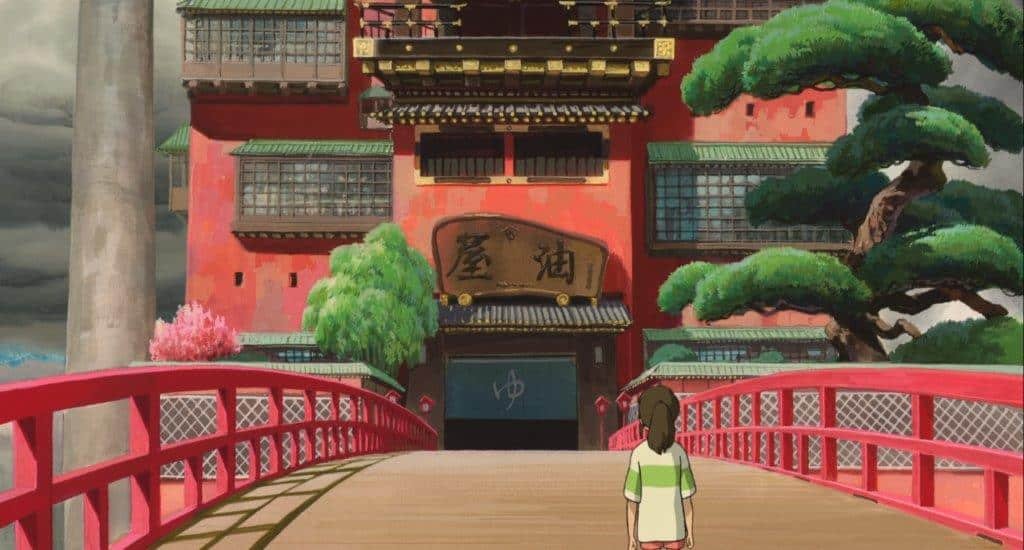
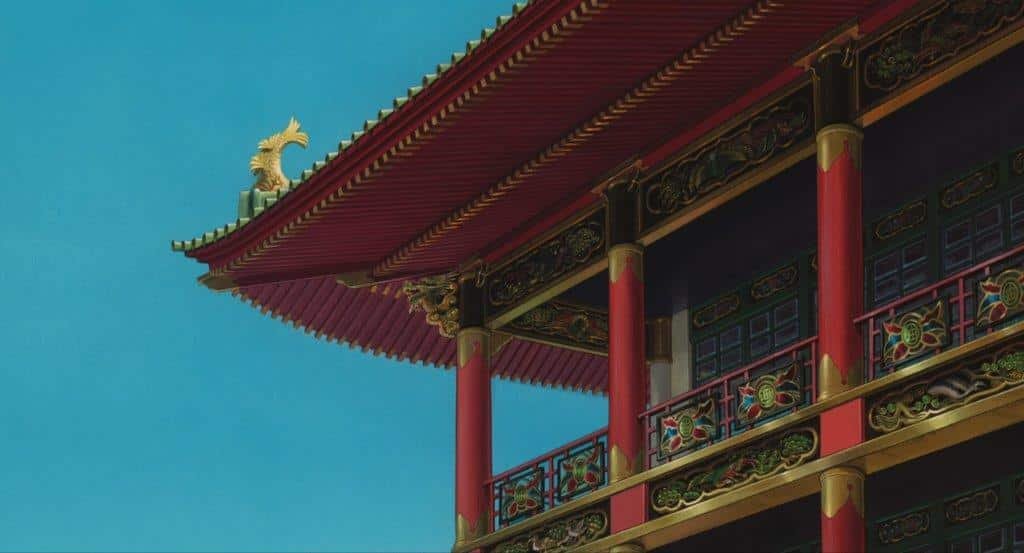
Asian palatial architecture with a predilection for red. This color symbolizes power, fidelity, leadership, dynamism and love as well as good luck in Chinese culture, so it used to be a color chosen by royalty.
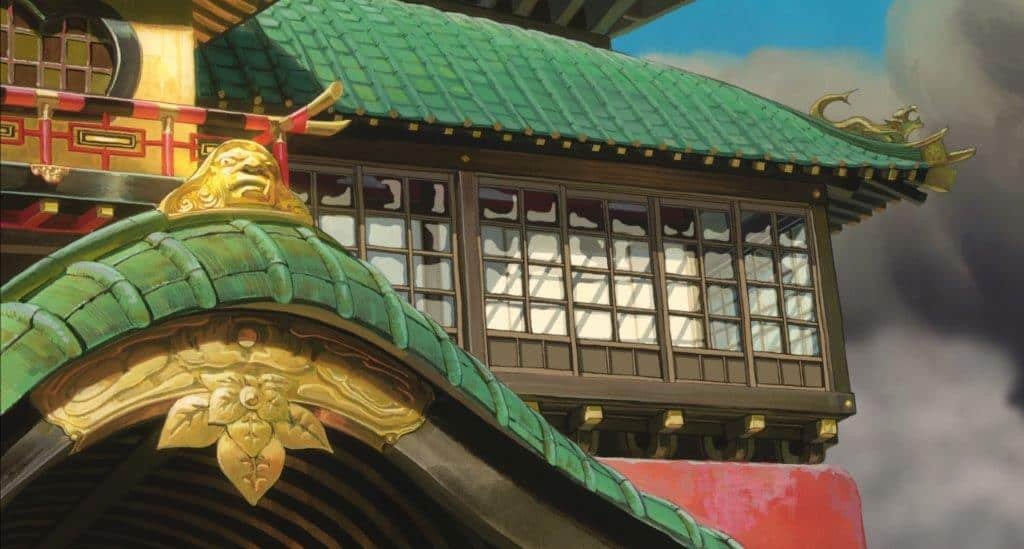
Precious golden details play very well with wood and green ceilings, thus projecting a natural harmony.
The windows will curiously dress the corridor that will surround the rooms, which will also receive this light through the paper Shoji doors, windows or room dividers used in traditional Japanese architecture. These are usually translucent or even transparent sheets on a lattice frame.

The upper floor shows a checkered floor that could symbolize water (black), metal (white), gold in coatings (earth) and green in the window (wood), a clear example of the well-known art and philosophy of feng- shui and its cycle of natural interactions.
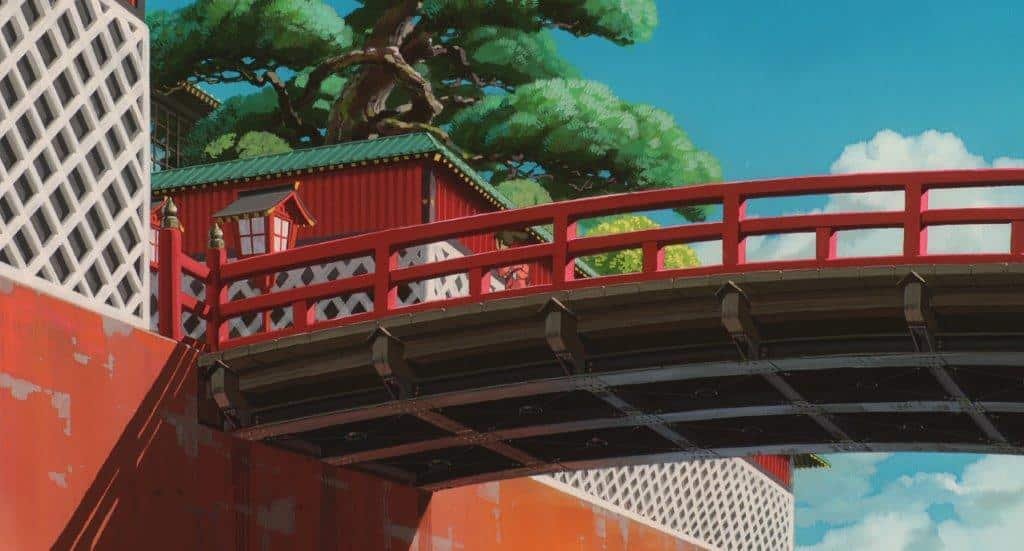
Curious detail that we observe in the main bridge, seeing it seated on a metal structure that gives it a sense of stability and durability typical of a project planned to last over time.
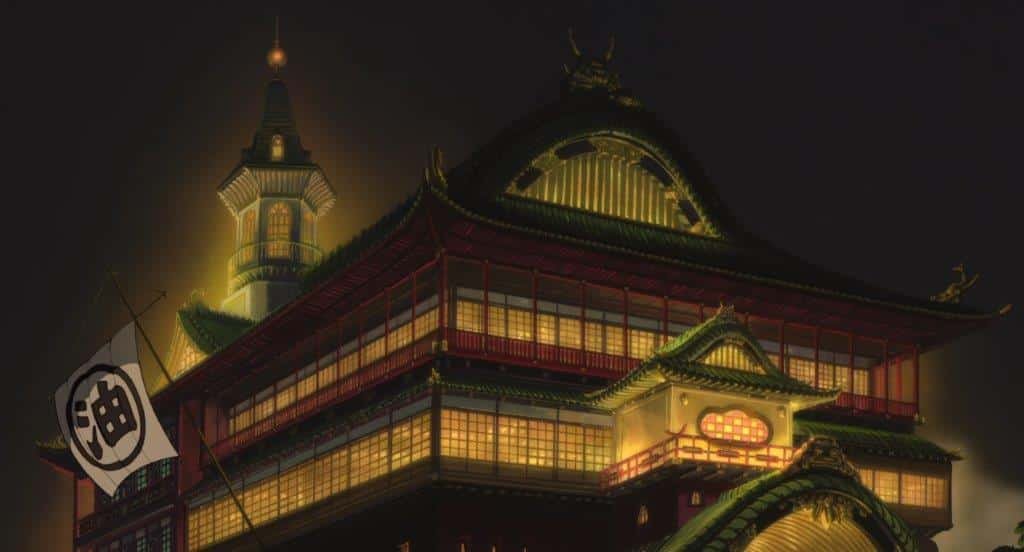
The style with which they give the “palace” at night is charming, where gold is the predominant color that adorns, through hundreds of tungsten lights, the silhouette of the building in ocher tones that are retained by the steam from the bathrooms, forming an aura of candor and majesty.
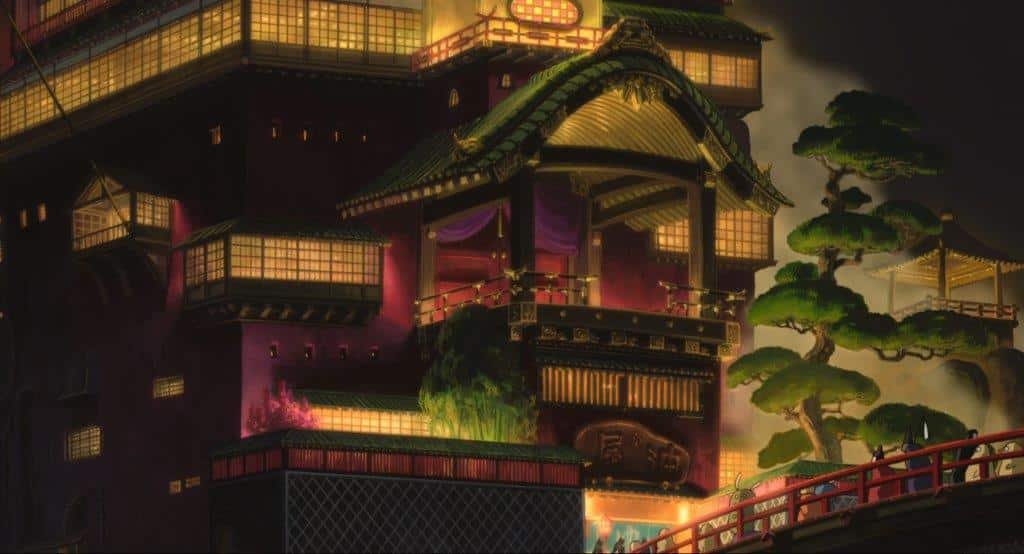
The red of the facade gives way to purple, the second color of royalty, which symbolizes luxury and ambition open to welcome the welcome guests.

Upstairs we can see a Japanese garden that despite being close to the reception, becomes intimate and calm, illuminated from the inside out thanks to the translucent shoji.
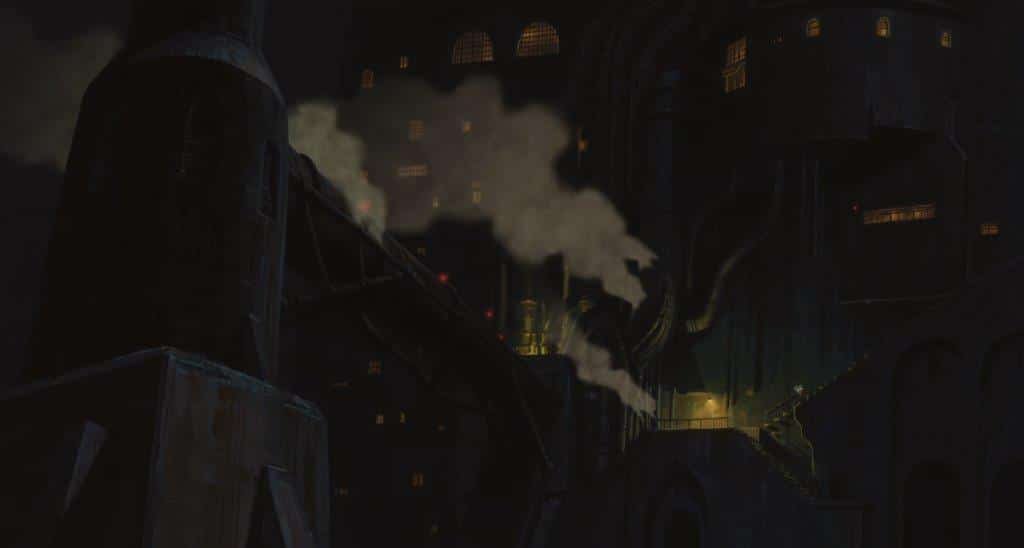
Paredes sucias sin oranmentos de colores ennegrecidos nos avisan que estamos en la zona de la clase obrera.
Behind the palatial image overturned in the portico, we find the back room of the building. Large and visible pipes run through the walls without light that accentuates a grey industrial smoke that contributes to a feeling of secrecy, inaccessibility, tradition and danger.
Dirty walls without ornaments of blackened colors warn us that we are in the zone of the working class.
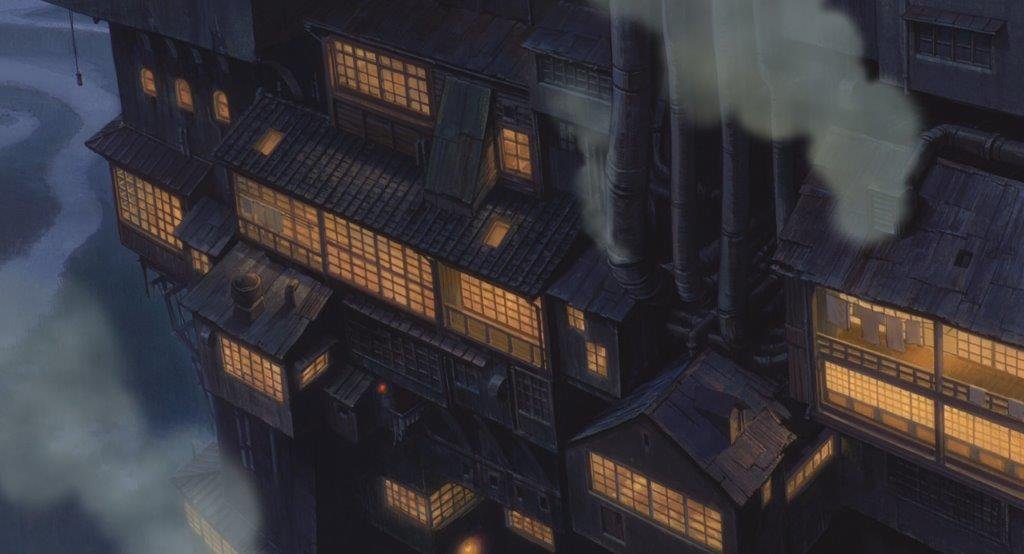

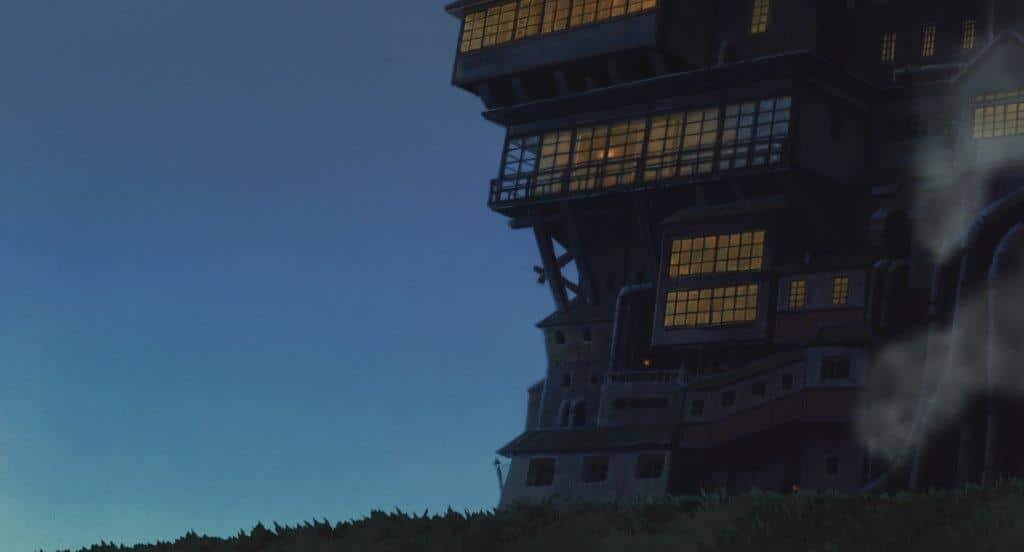
We see how well the balconies distributed in chaotic levels give us a sense of humility, improvisation and the need to correct a lack of space and light destined for the rooms of the workers who live well with the minimum and whose existence is hidden from the eyes of the client.

We fall in love with the balcony of the owner of the Bathhouse. Here the exterior decorative motifs are more grandiose as they seek to be seen from afar and are enormous and complex, colliding in turn with the simplicity of the railing-window game that does not want to steal the limelight from the enormous arcade and its infinite ceiling projection.
In the following photos, we can see details of the service walls, where vertigo is played within its impossible accesses that cross an environment of monotonous colors and industrial appearance where cement and metal are clear protagonists.
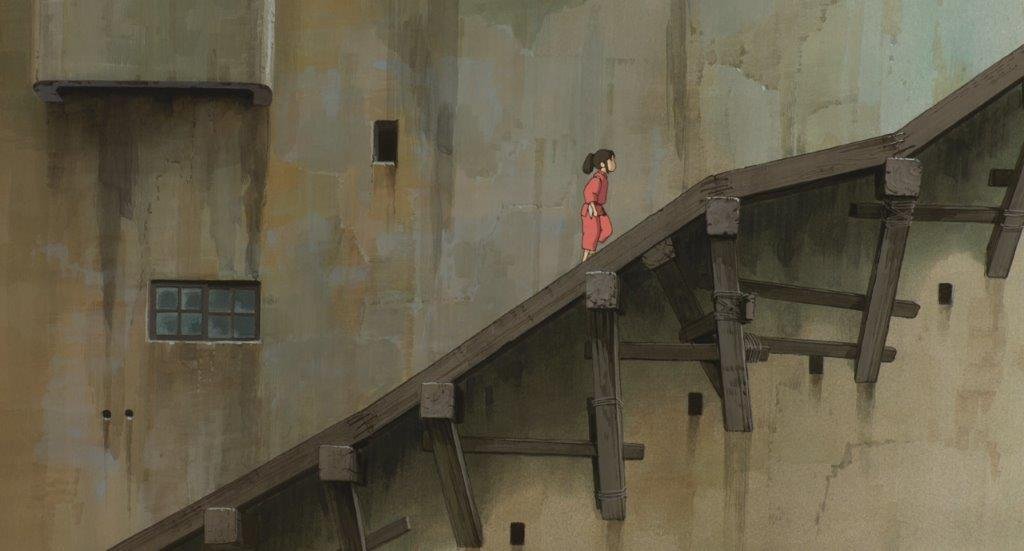
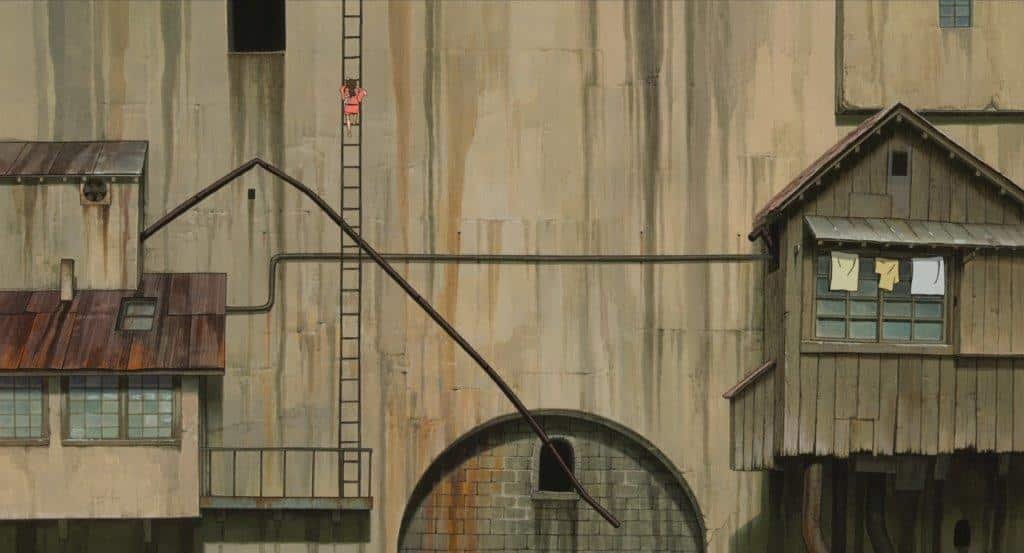
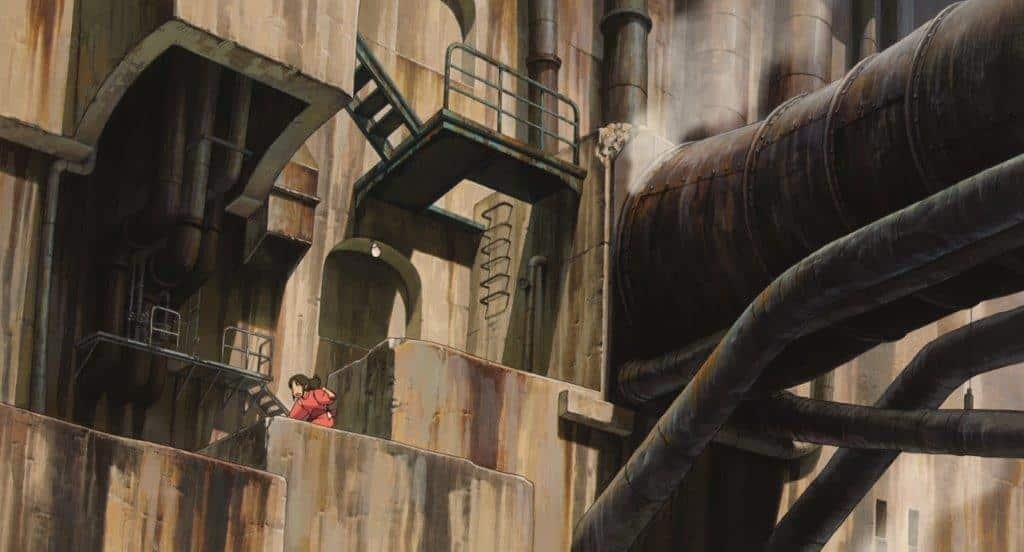
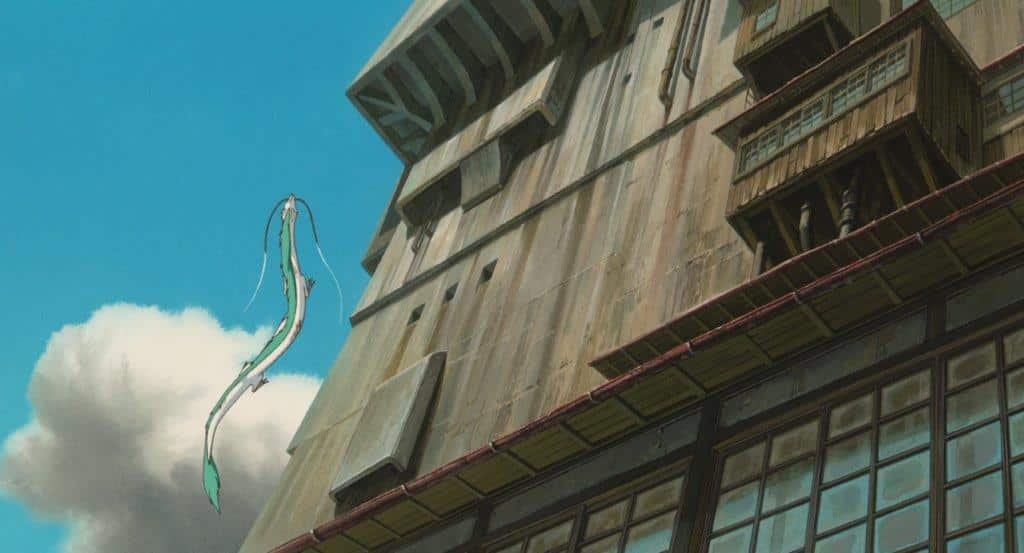


As we mentioned before, the author presents a challenge to Chihiro, a test of valor and courage, exposing her to an access without lighting, railing, fragile and totally exposed to a possible fatal fall. It could be said that he seeks to influence us in the dilemma of the protagonist, that she would be willing to do whatever is necessary to recover her parents.
Another aspect to highlight is the comparison between the offered to the Bathhouse clients, gods it seems, who have well-reinforced bridges, corridors and elevators, against the most inconsiderate carelessness resources when dealing with the working-class accesses.
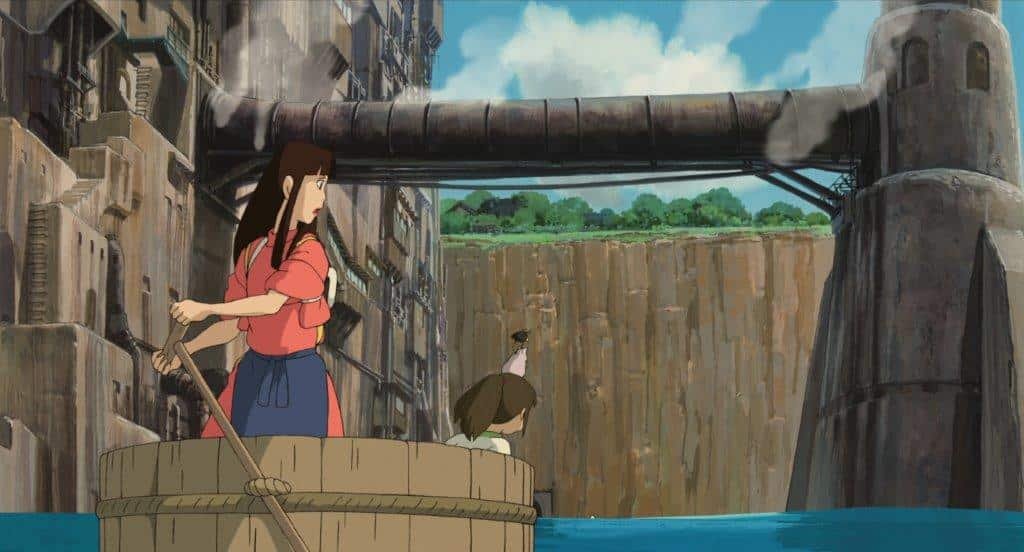
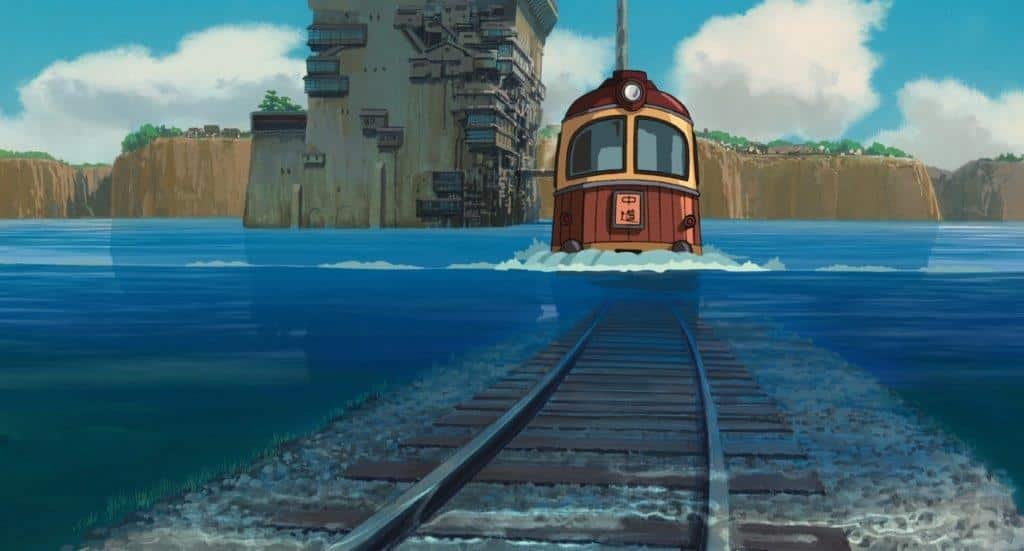
Another example of how to captivate the viewer by mixing concepts that are a priori plausible with implausible but beautiful situations.
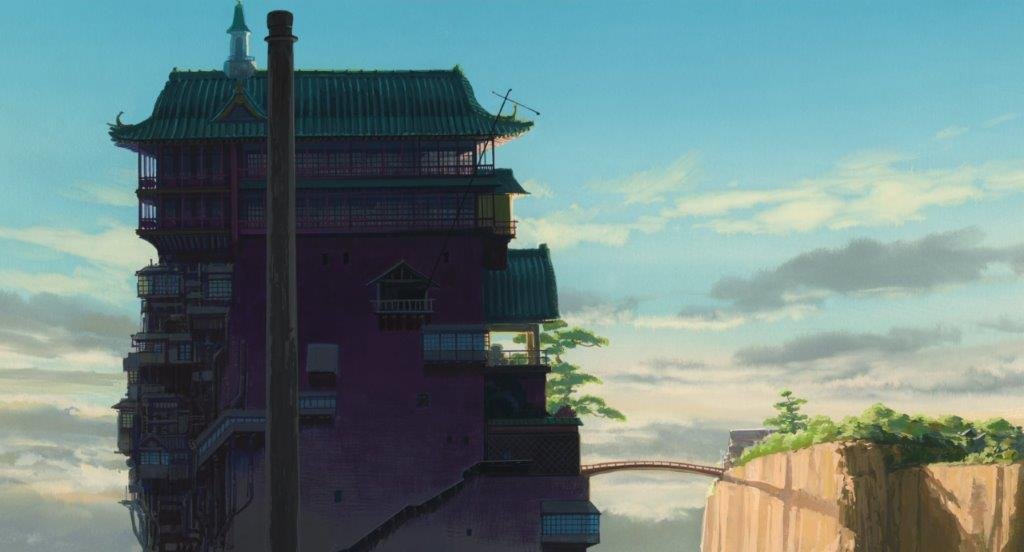

The Boiler Room
We find ourselves at the entrance to the boiler room, steaming pipes, large shut-off valves and abandonment, to establish the viewer’s concept of being in the heart of a submarine, a transatlantic ship or as is the case in the neuralgic center of this prosperous business.
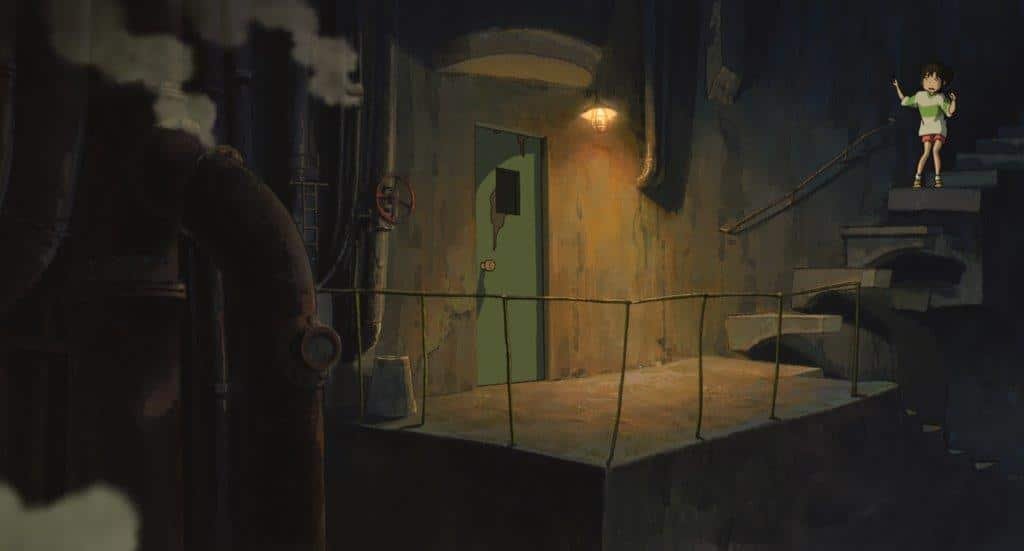
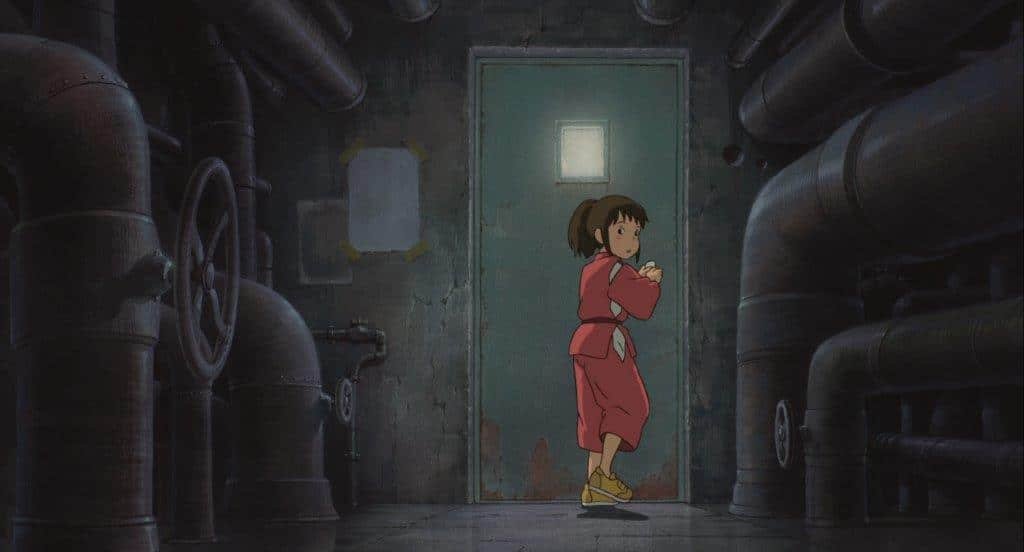
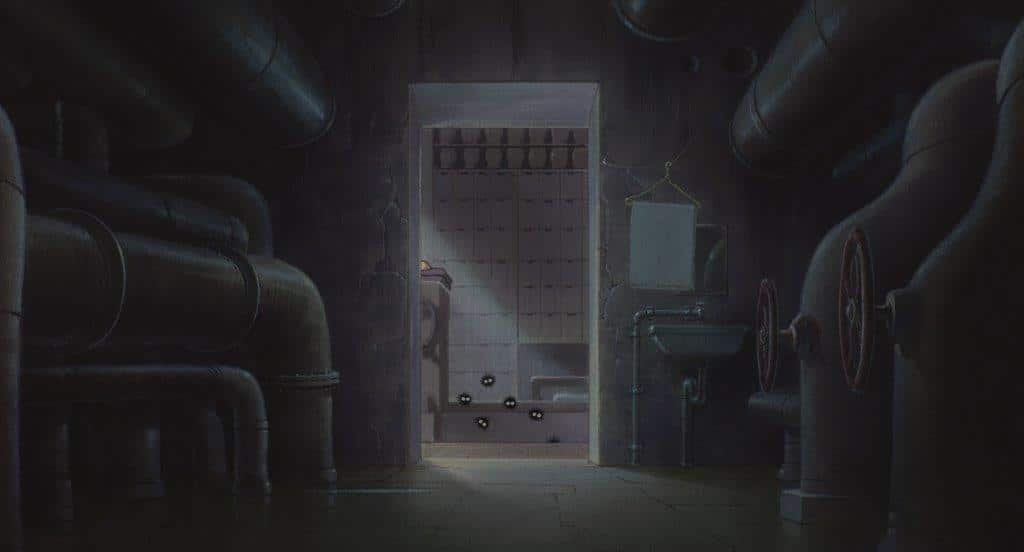
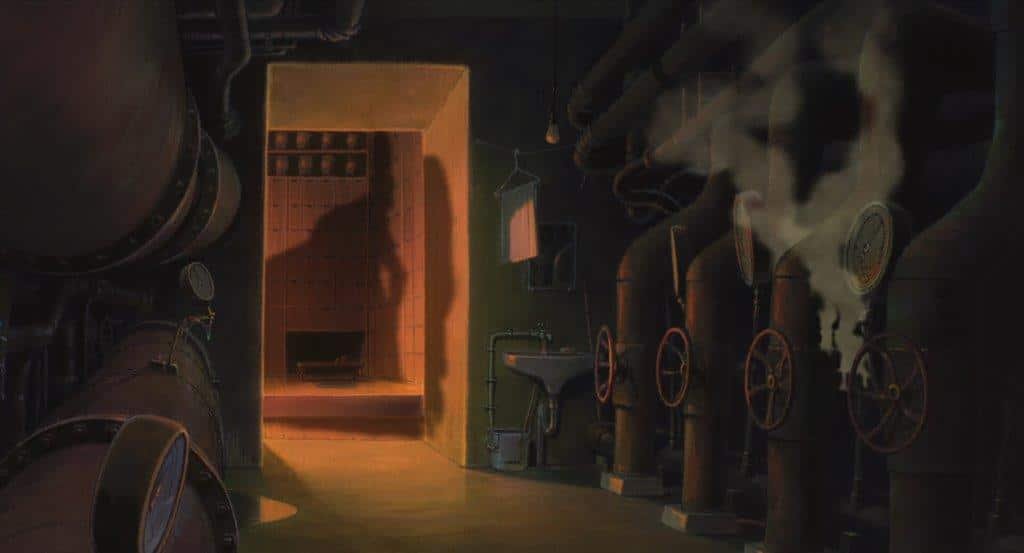
Cozy transition from the thick pipes capable of withstanding high pressures, to the simplicity of a room that exudes austerity but at the same time is warm and in a certain sense comfortable.
Walls lined with unlabeled chests of drawers (shoji style) and a wooden floor with long stripes that call for serenity.
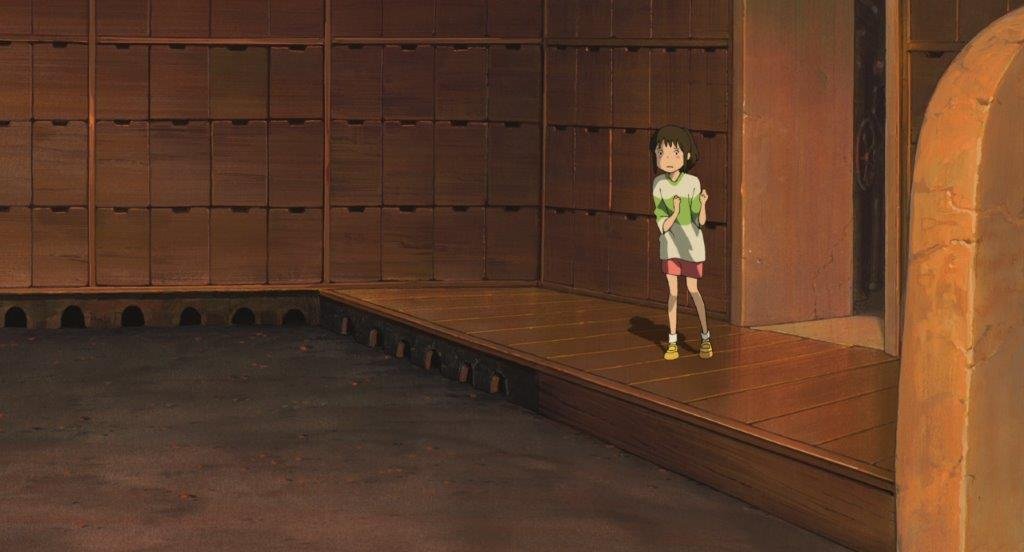
Little dwellers come out of the mousetraps and are in charge of feeding the boiler with heavy fuel stones. The wood is interrupted and gives way to a work space that leads directly to the floor.
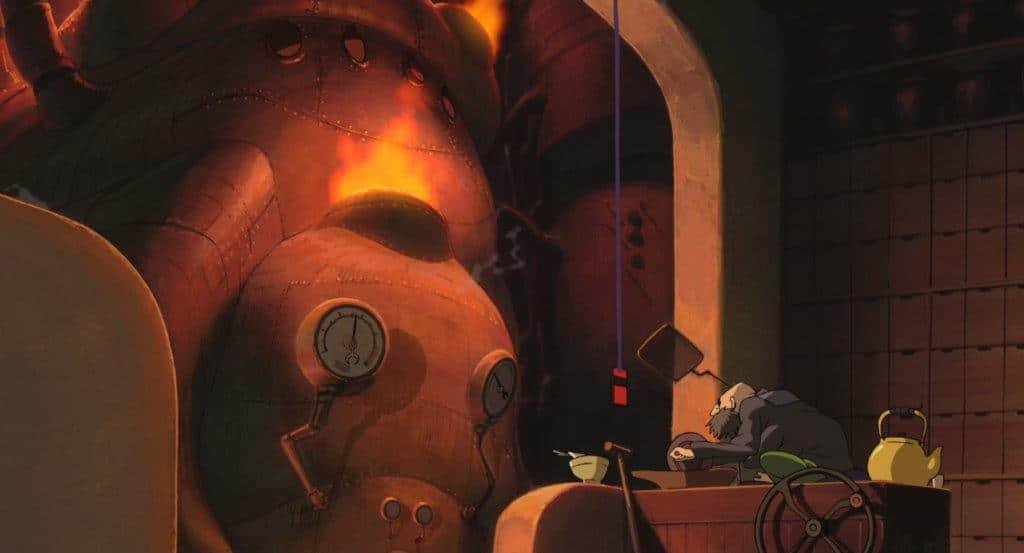
The flaming boiler of copper tones that draws with the pressure indicators, eyes and nose, presenting it as if it were a beast of gigantic proportions kneeling to the orchestra’s director.
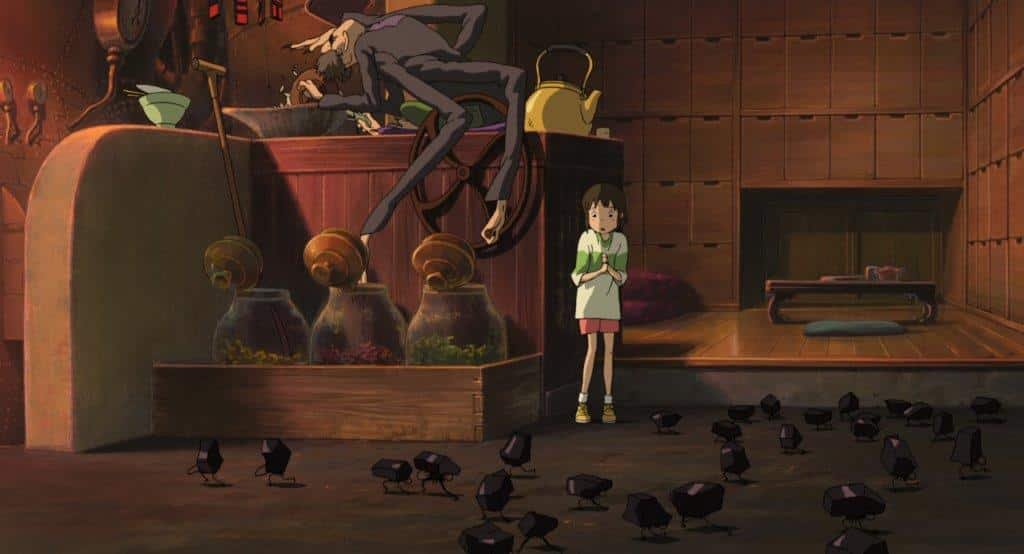
Excellent combination of the wooden planter with the glass spice vases, breaking the wood as the main material.
The rear room, with the hollow in the wall to define another room, presents a new ambient with the table that strengthens the scene by offering complexity and functionality.
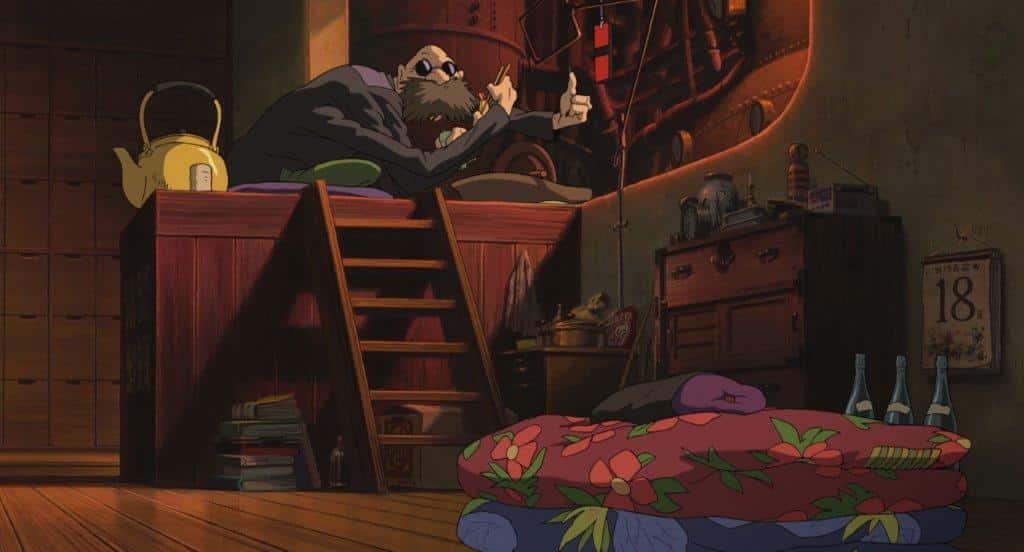
Finally, they solve our doubts about the life that Kamaji leads, showing us new surfaces full of objects that make an effort not to fall, which gives us an idea after discovering the good nature of this character, that also has a simple life within the building.

The Inside
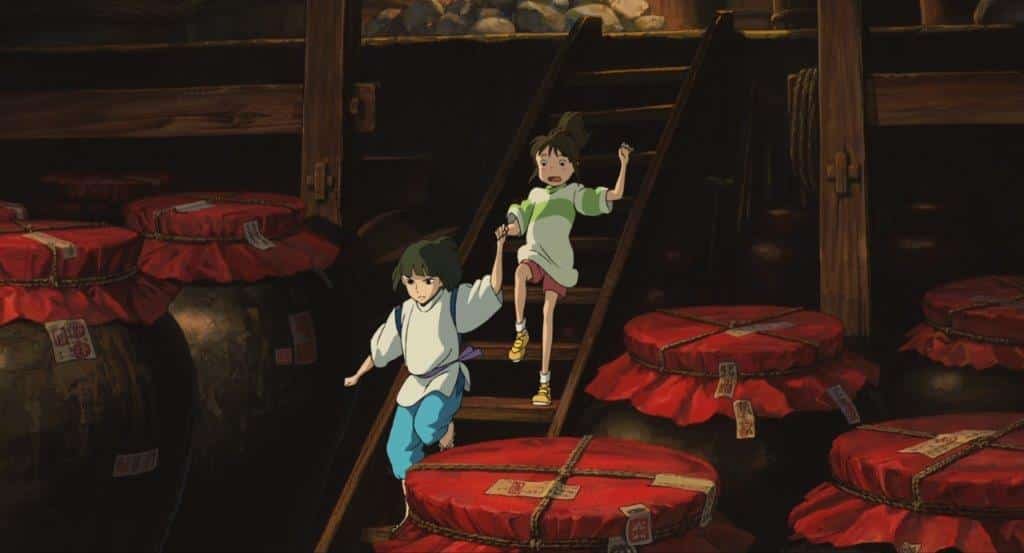
I was very impressed by this room with large clay jars full of labels that could indicate that they are imported products. We also witness more examples of the screwless assemblies of the crossbars.
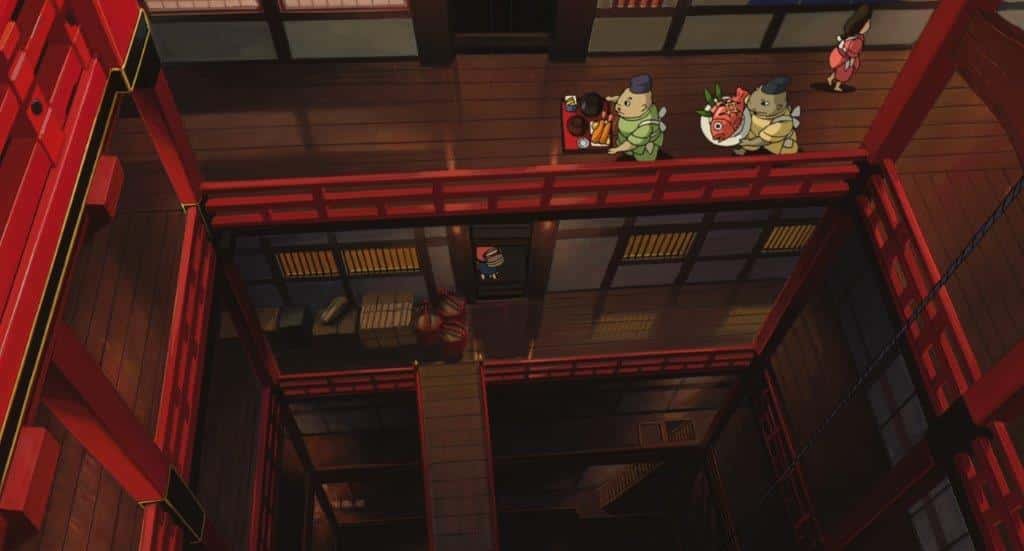
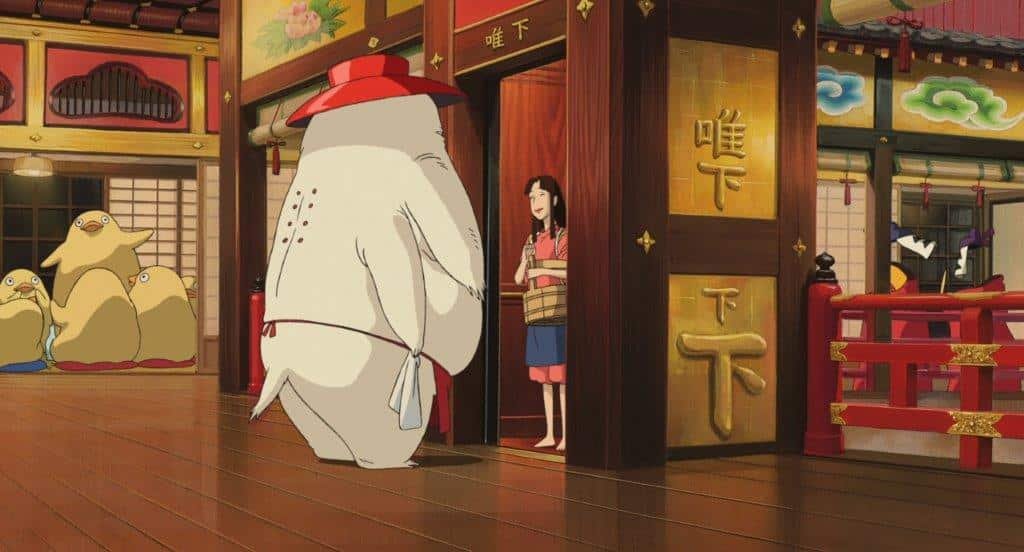
We arrive at the rooms of the gods, full of light and golden motifs that have a central interior patio that is overlooked by the balconies of each of the building’s multiple levels.
The colors, the ajar wooden railings, the engravings and the paintings are back. The structures are solid, granting confidence and comfort.
The imperial motifs that adorned the facade are replicated inside to maintain consistency with the initial promise of luxury and style.
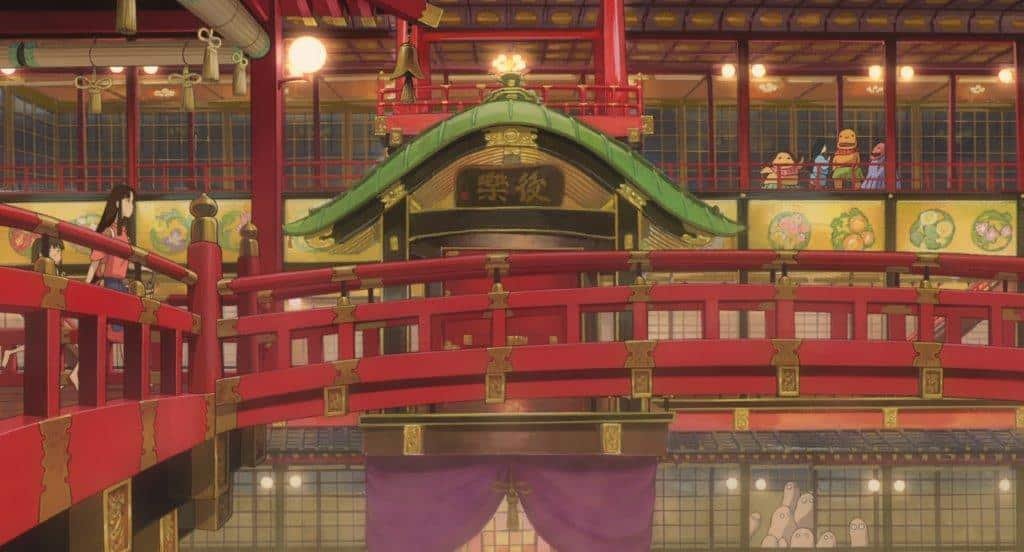
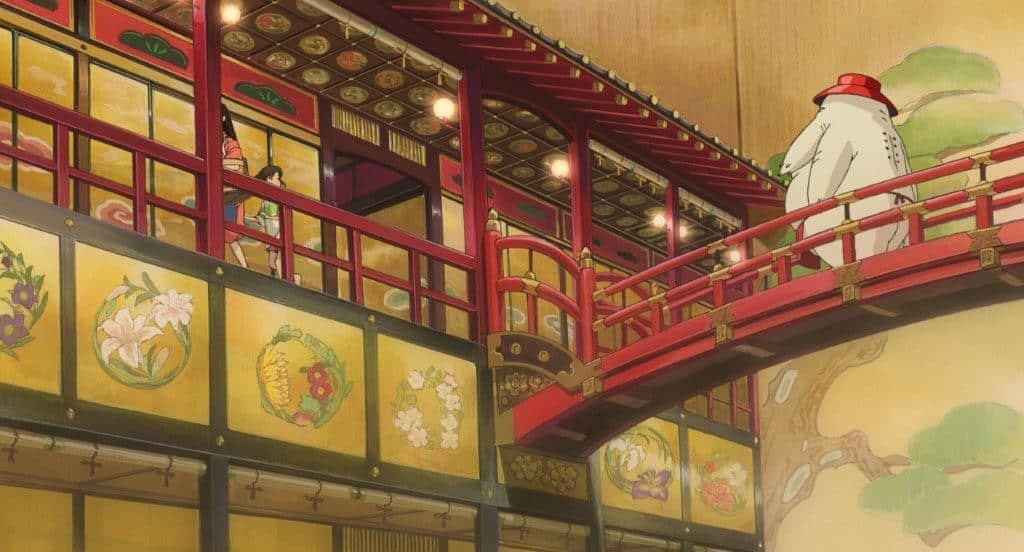
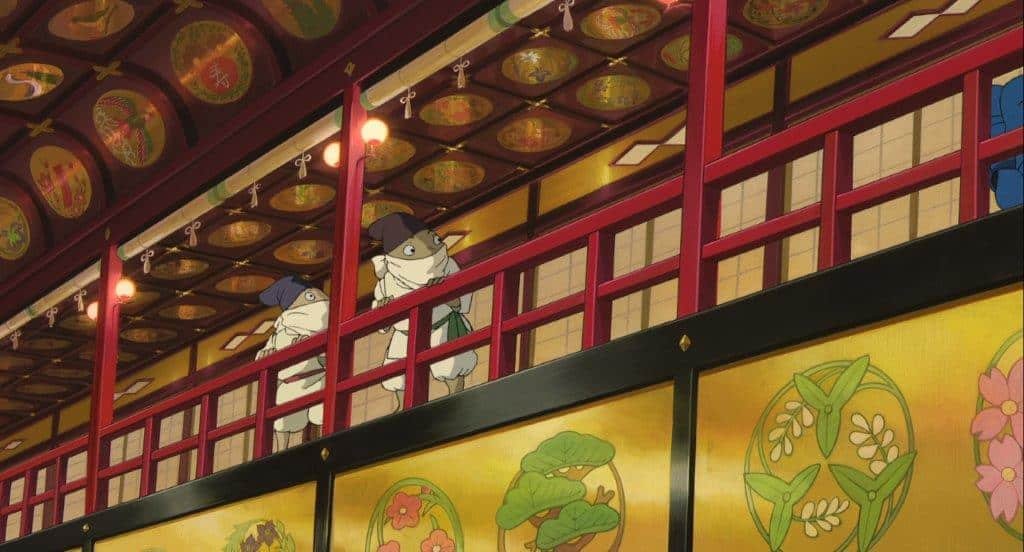
Los Banos se desviven por mostrar exuberancia, en esta ocasion vemos los tan distintivos techos de maderas con complejos lacados que parecen salidos de la Ciudad Prohibida de Pekin..
The Bathrooms go out of their way to show exuberance, on this occasion we see the distinctive wooden ceilings with complex lacquers that seem to come from the Forbidden City of Pekin.

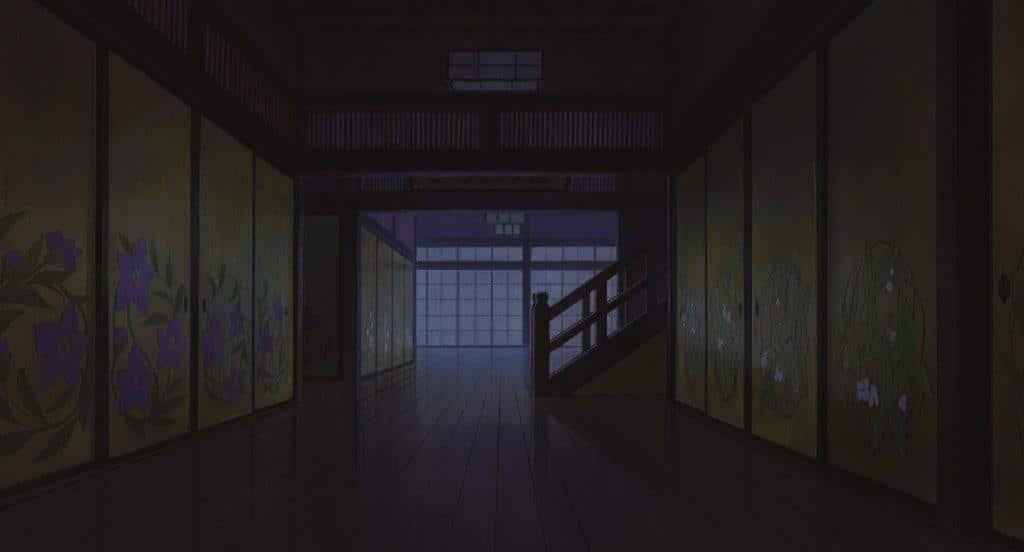
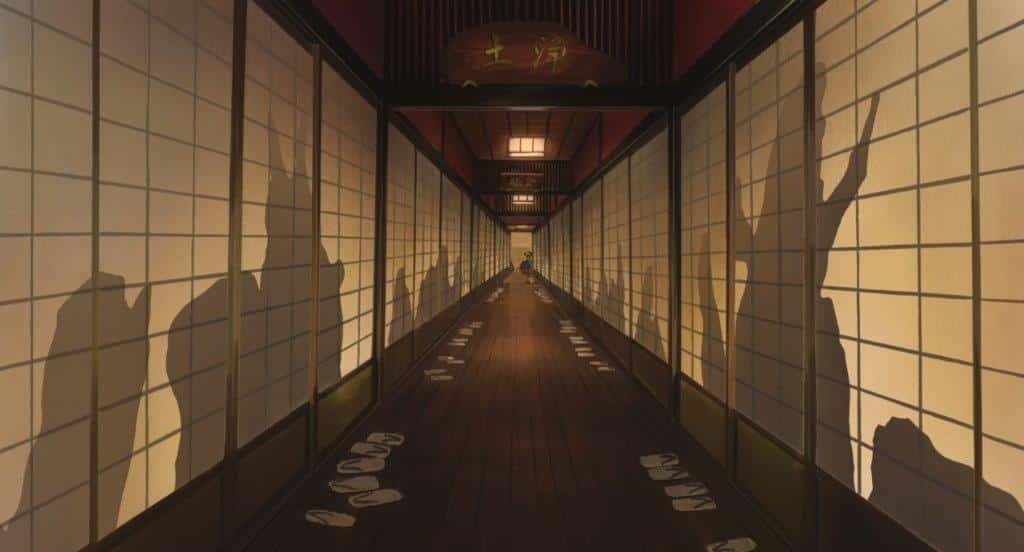
High ceilings, wide corridors and dim lighting invite you to rest in the long rooms destined for royals.
On the other hand, we have below the rooms and common areas of the workers, where the spaces are smaller, shared and arranged in irregular levels with almost no security in the accesses.
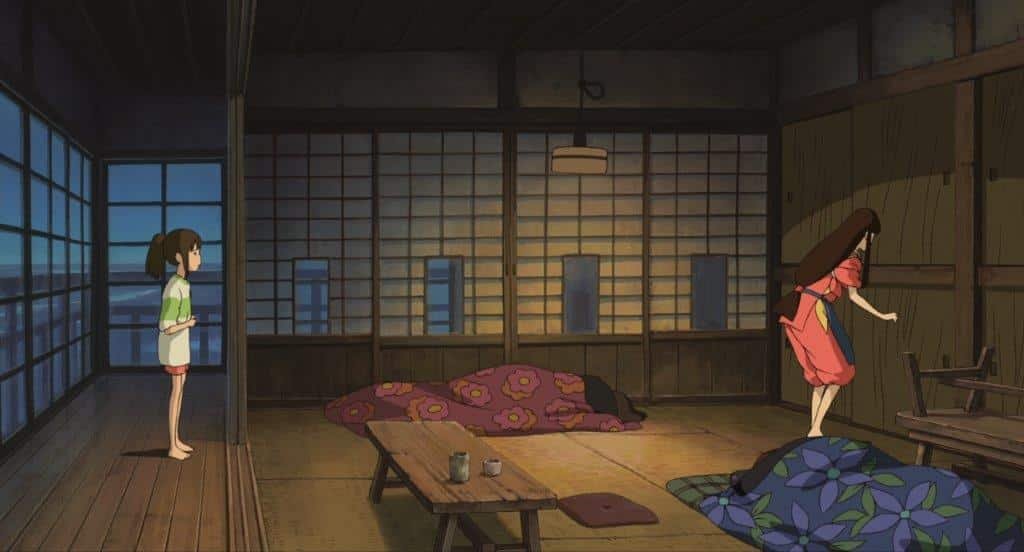


The parallel world is offered by a twined community, despite the strange difference between amphibious men and women with a conventional structure, which does not just offer the feeling of a large family but the existence of two communities that respect and coexist.
The lack of space, the rooms that open onto the interior patio and the stairs that force one to pass in front of the balconies favor the feeling of closeness and society.
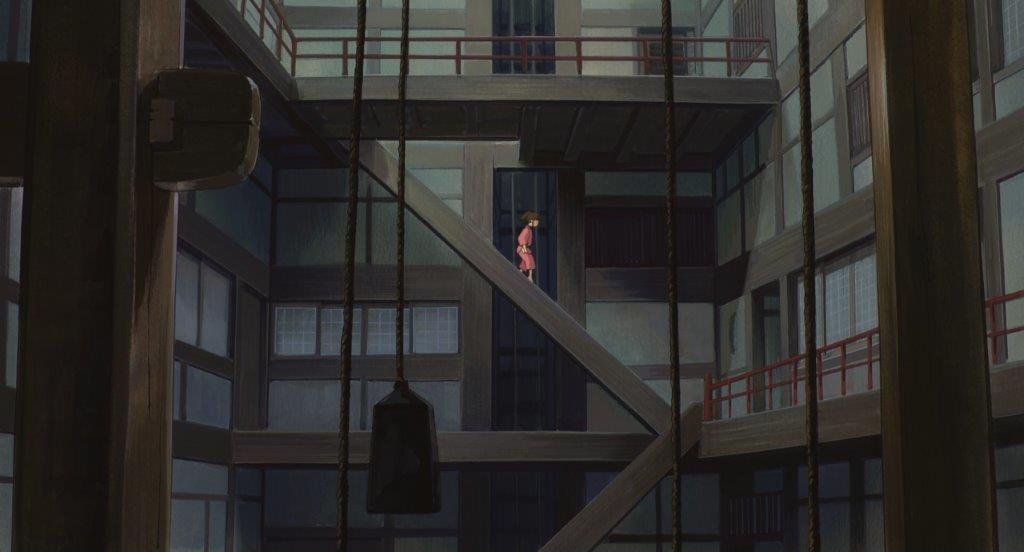
The artist decides to mix the serenity of the room, the skill and the fragility of the protagonist to leave us glued to the screen wondering if we would be able to get down there.
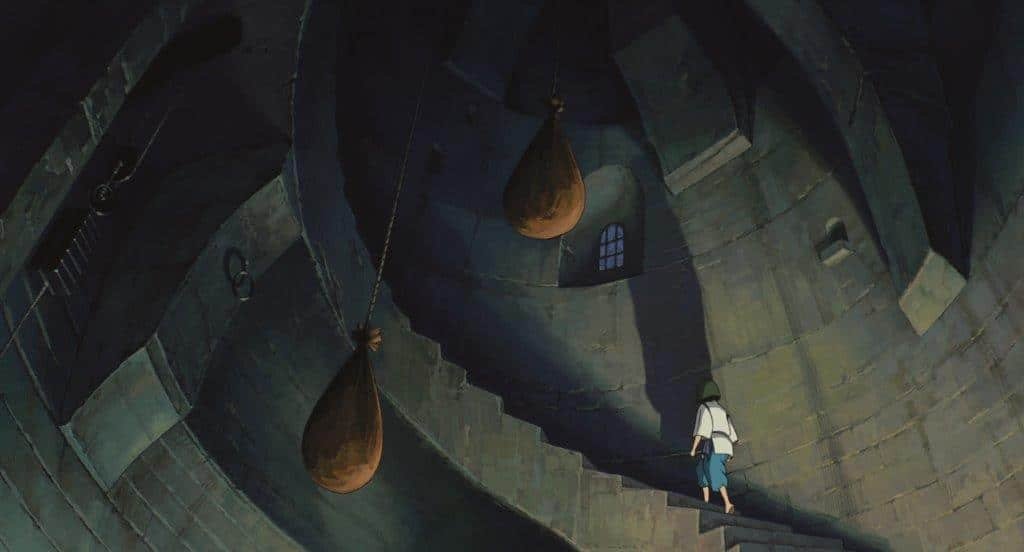
The sequence adds some weights as a balance resource that well define the direction and existence of gravity.

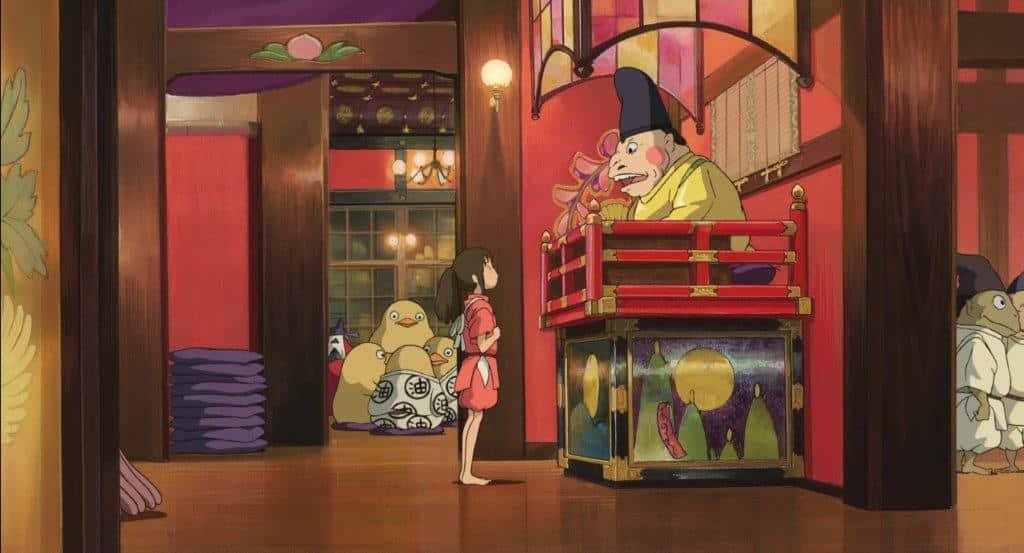
We return to the rooms of the clients, spacious and well cared for; decorated with simple floral details and furnishings displaying highly polished lacquer and inlays.

The room that gives this business its reason for being, is presided over by a grand entrance that leads to the spa, a scarce room in artifices, that ends up being merely rudimental, where wood and organic forms take center stage. A nude stay for a client in his nudity.

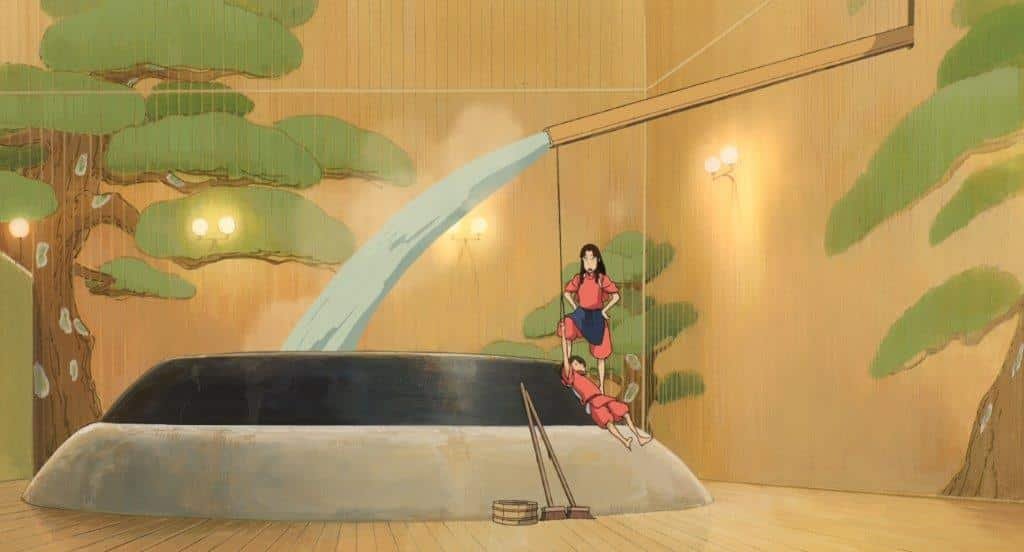

The Village
Chihiro and her parents enter the villa near the spa for the first time. The father at that time deduces that it could be a kind of villa that could have been part of an old, abandoned fair. That first impression was sustained by being a town dressed in peculiarity; disparate houses, analogous and almost complementary bright colors that decorate festive facades that often distort the real shape of the building to show a countenance ready to entertain.
Light bulbs and lanterns everywhere; ground floors open to welcome customers eager to consume and a very wide main street, give the feeling of waiting to receive a very bustling nightlife.




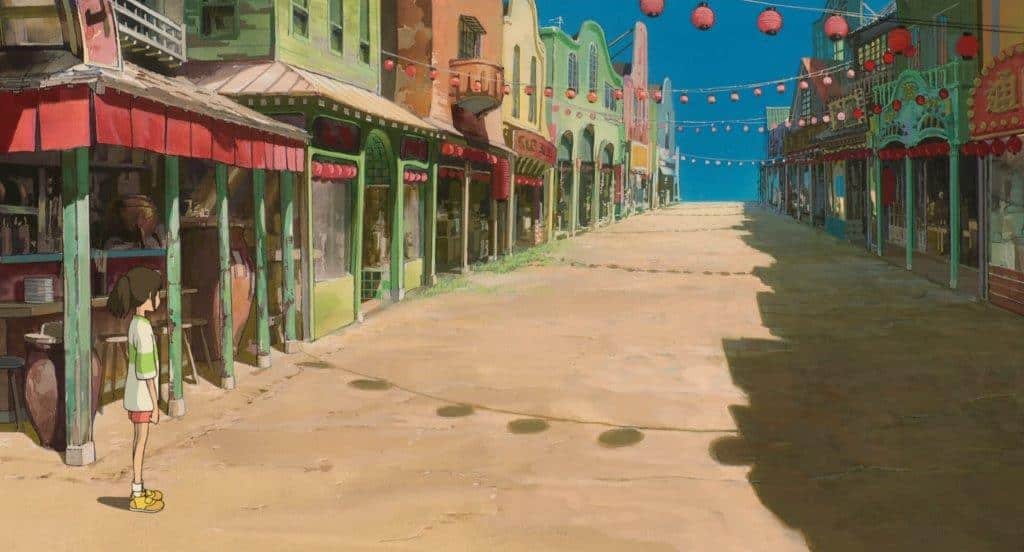
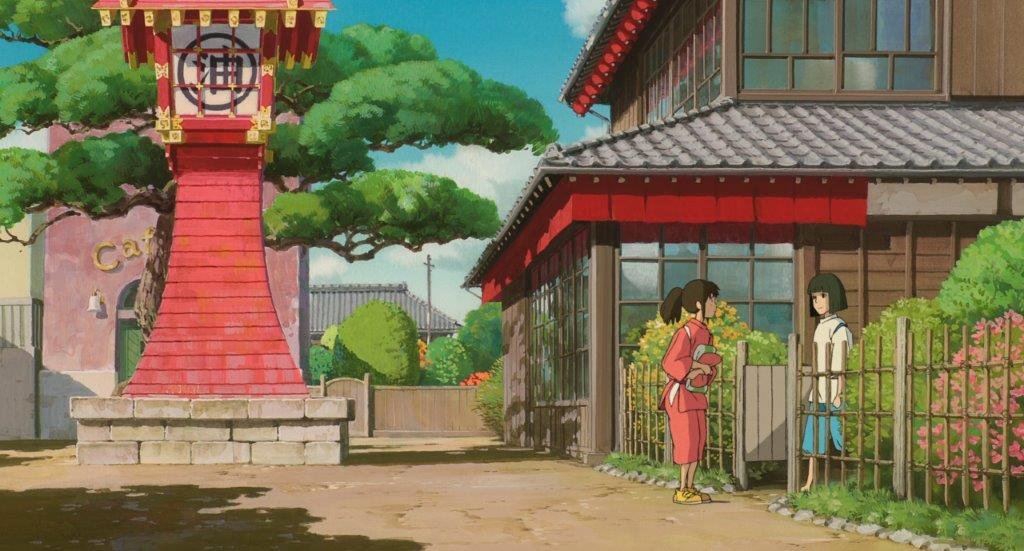
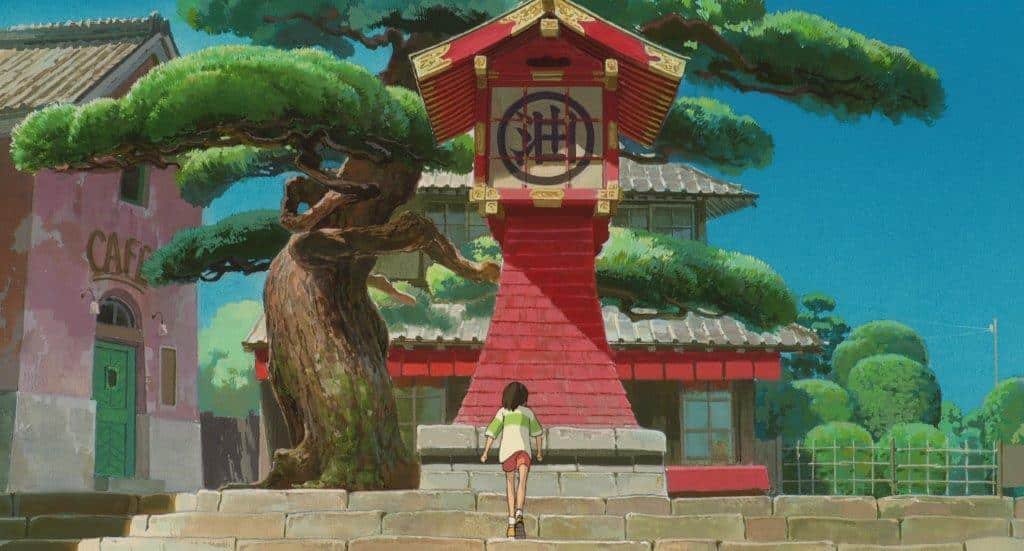
A mixture of styles that sometimes seem to be borrowed from western movies, Spanish old townhouses, and Japanese samurai villages, which meet perfectly in a square led by what seems to be a clock, but what ends up being a kind of altar to a Kanji that well It could be a requirement or a proclamation.
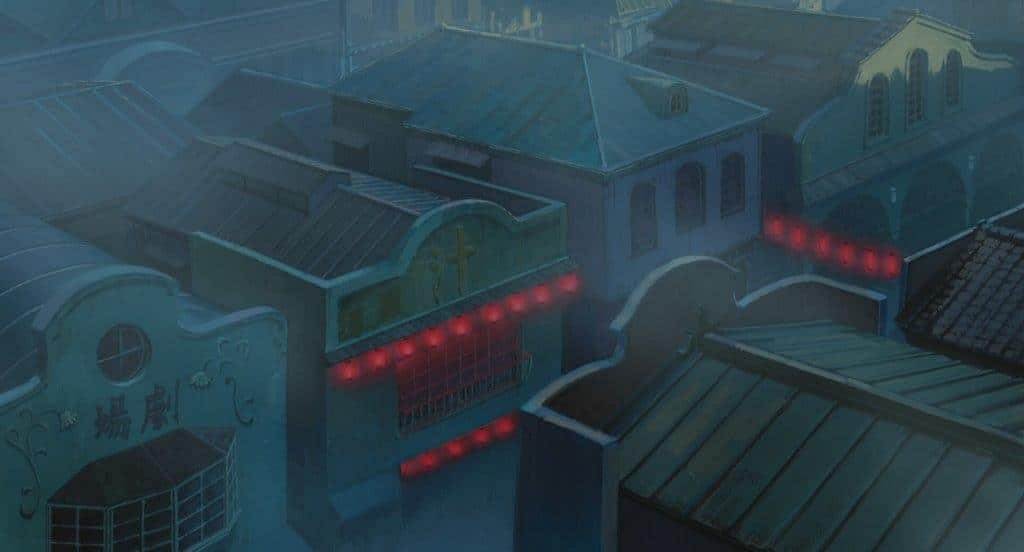
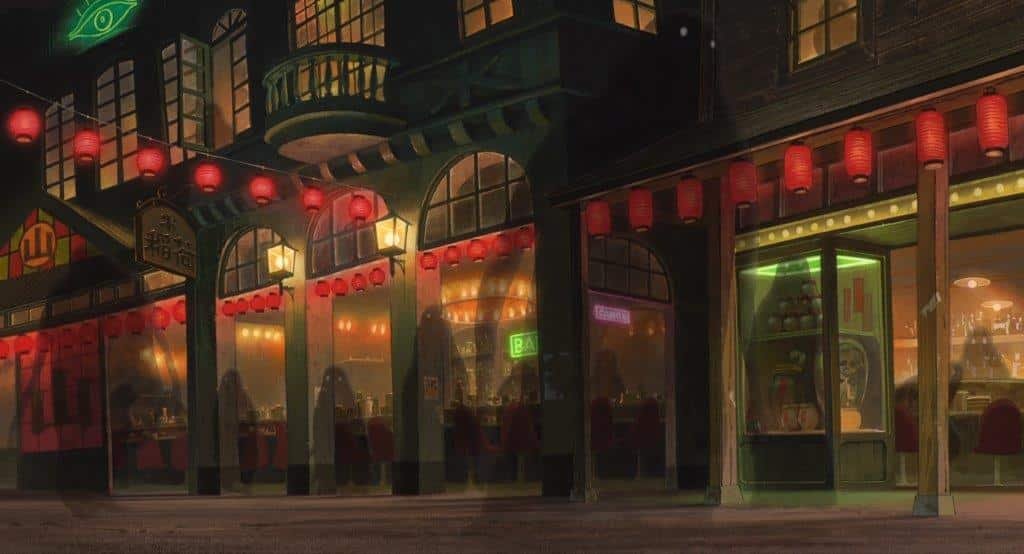

The city was focused on nighttime enjoyment, and we see how the dim light and the hundreds of light bulbs work well in a party environment that feels spooky at the same time.
The streetlight does not seek to be the protagonist, giving way to the different proposals of the premises
The repeated use of stained-glass windows with astral motifs (above we have two fallen stars) is very striking, generating a certain confusion, such as the generated by churches where someone might value the effort of the craftsmanship of the windows but does not quite understand if it could be considered beautiful when you see the set.
…maybe the artists want to transmit spirituality as it is an establishment frequented by spirits.

On the other hand, the town becomes narrow and intricate when it is not about the points exposed to the public. The city behind the city where we again see a lack of light and detail.

Yubaba’s Floor
We have arrived at the floor of the owner of the business that includes the most pompous rooms of the place, drastically changing architecture and decoration, leaving the Chinese-Japanese to the classical western palace while maintaining certain Asian elements that serve to adapt the new style to something more local and recognizable.
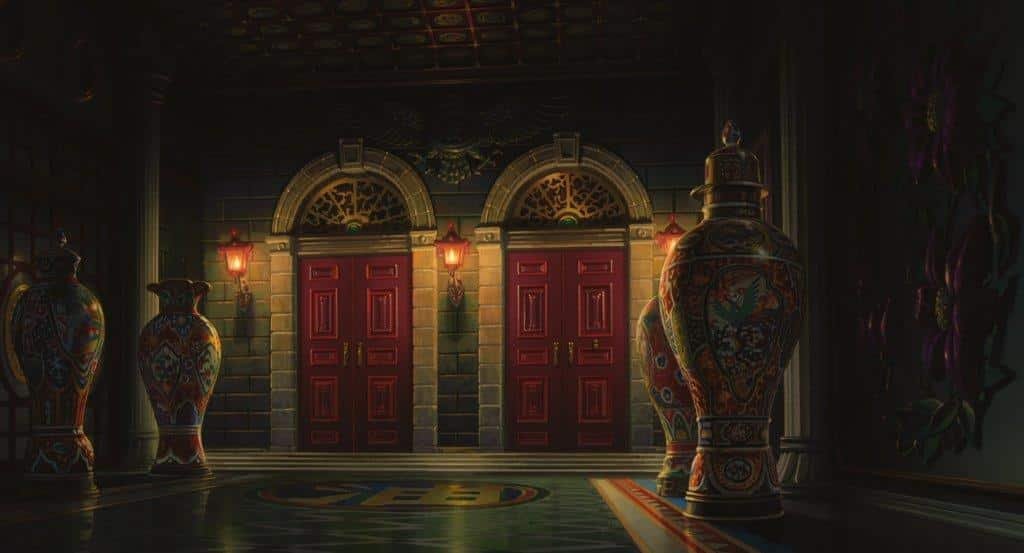
Two large semicircular Roman arches with noble wood gates with punctual lighting generate mysticism, attention and confusion once again, leaving us with the feeling of wanting to know what is hidden beyond this palatial room that has left us off guard.
The protagonist comes across the unexpected, a building within a building on a different continent. Double access generates greater confusion, plus the addition of the exuberant giant porcelain vases erected from handcrafted floorings with high bill polished inlays dwarf us and relegate us to states of inferiority.

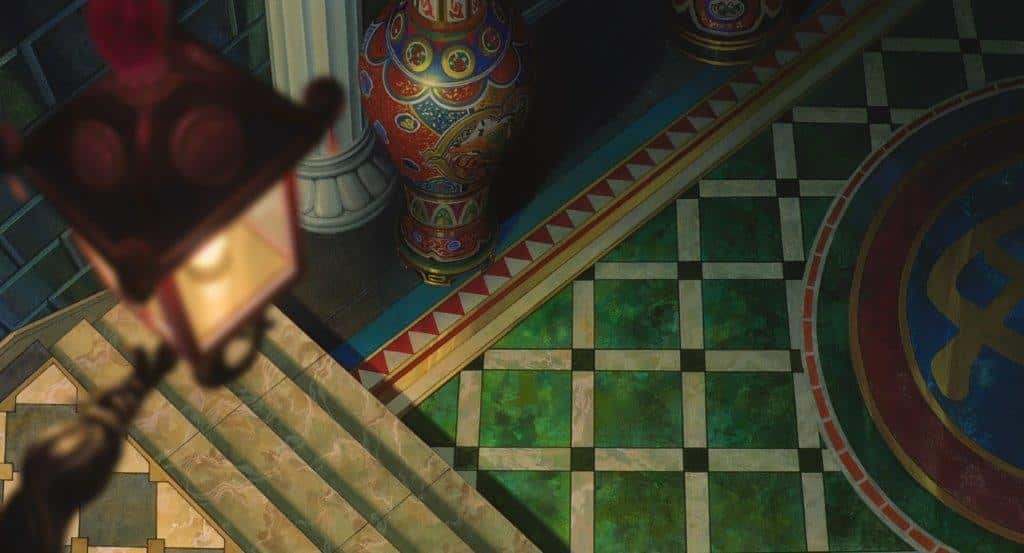
The room uses Doric-style Roman columns that are hidden behind long vases to avoid an unequal and unnecessary rivalry, relegating these columns to a second level of decorative importance.
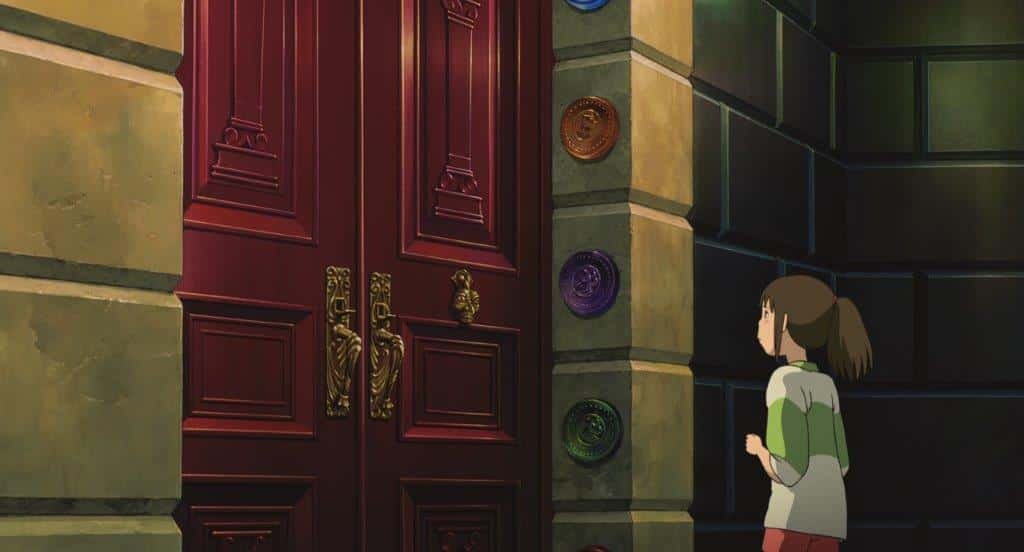
We observe the detail of the miter padded stone blocks plus the plates that decorate recharging a room that seeks not to leave rest in sight, providing a certain restlessness.
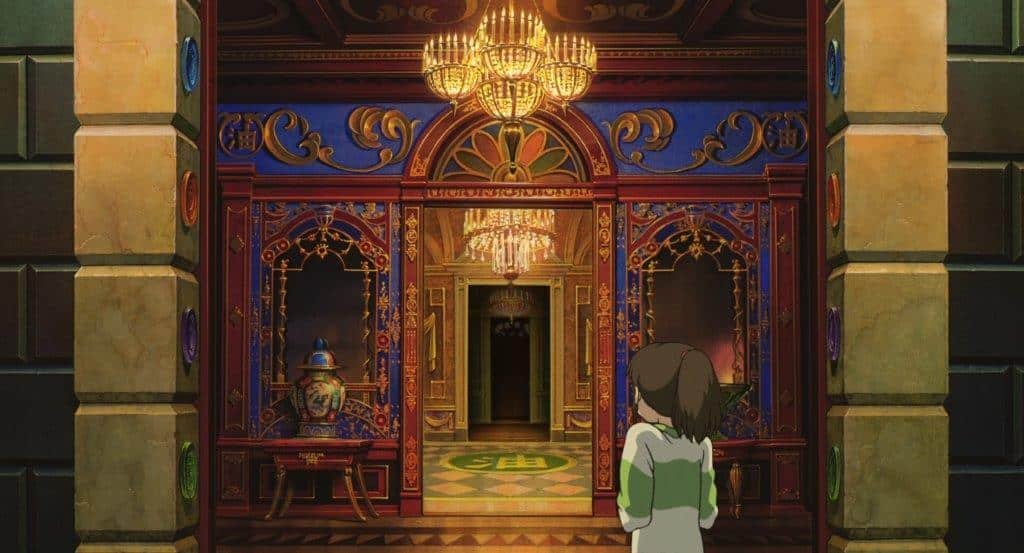

The doors open and unfolds before us exuberant rooms that transport us to the Catherine Palace in St. Petersburg (Russia) but with Japanese motifs, otherwise we would not associate it with Chinese or Japanese receptions.
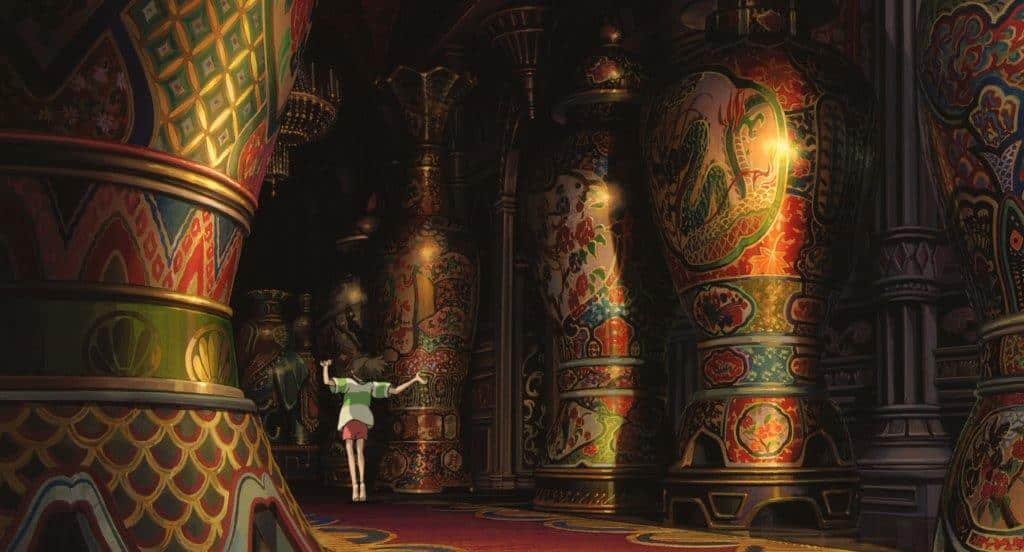
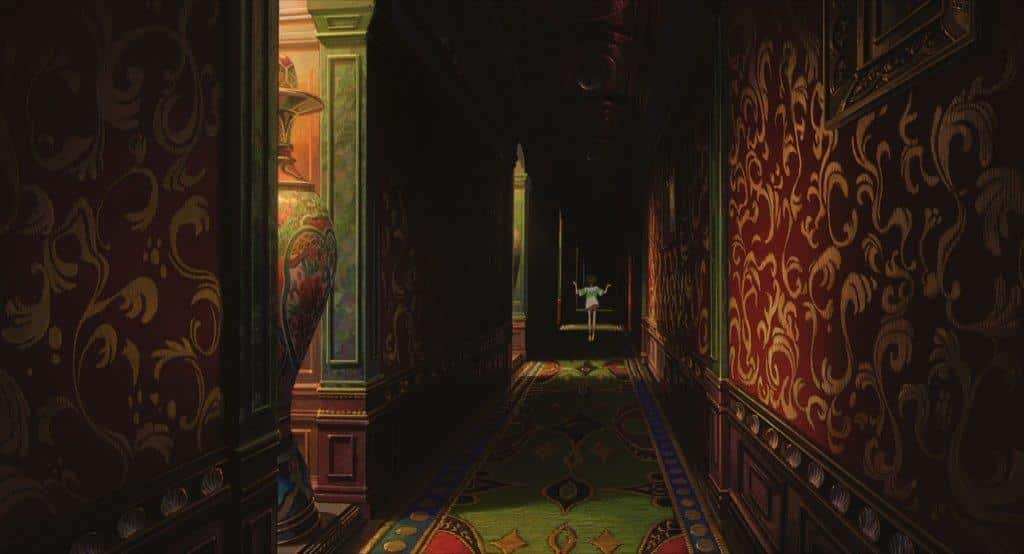
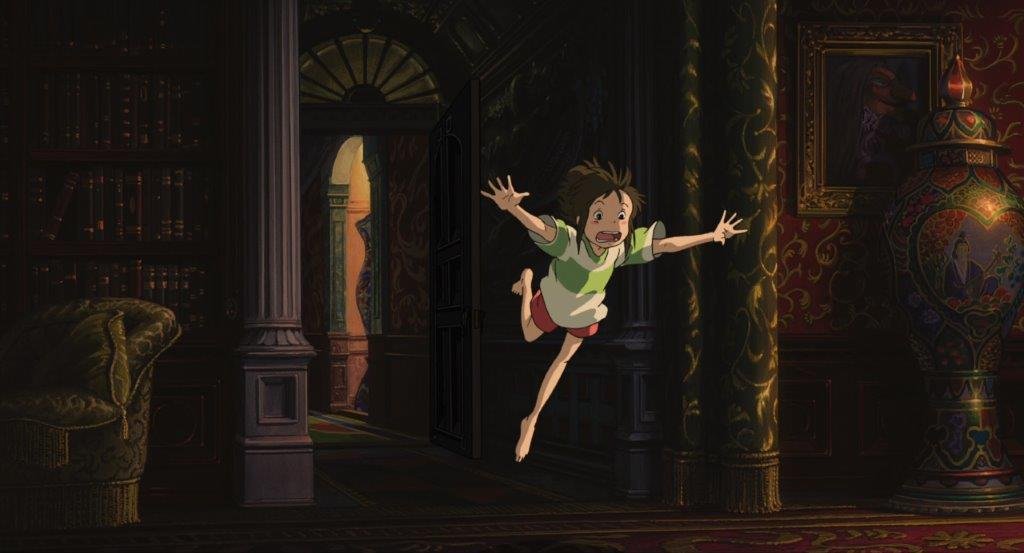
Spectacular setting built to overwhelm, scare and ignore any human being, especially a girl who finds herself engulfed by claustrophobic corridors that ignore sunlight with suffocating tapestries and insulting vases that look like undaunted and majestic court guards.
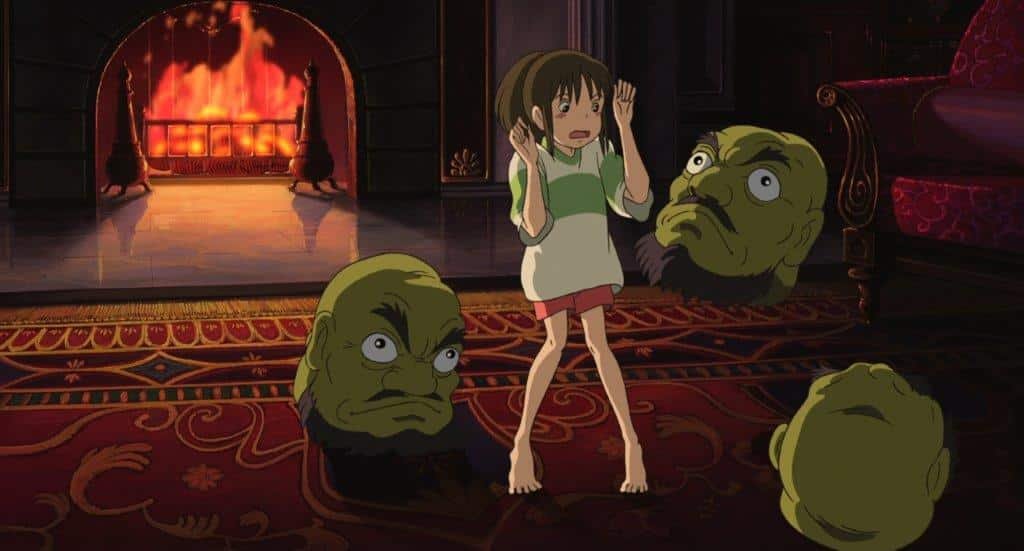
Interesting is the space of the fireplace that is introduced in a small room devoid of detail except for two pieces that escort the fire and that are harmonious on a marbled floor that aptly reflects such a stimulating profile.
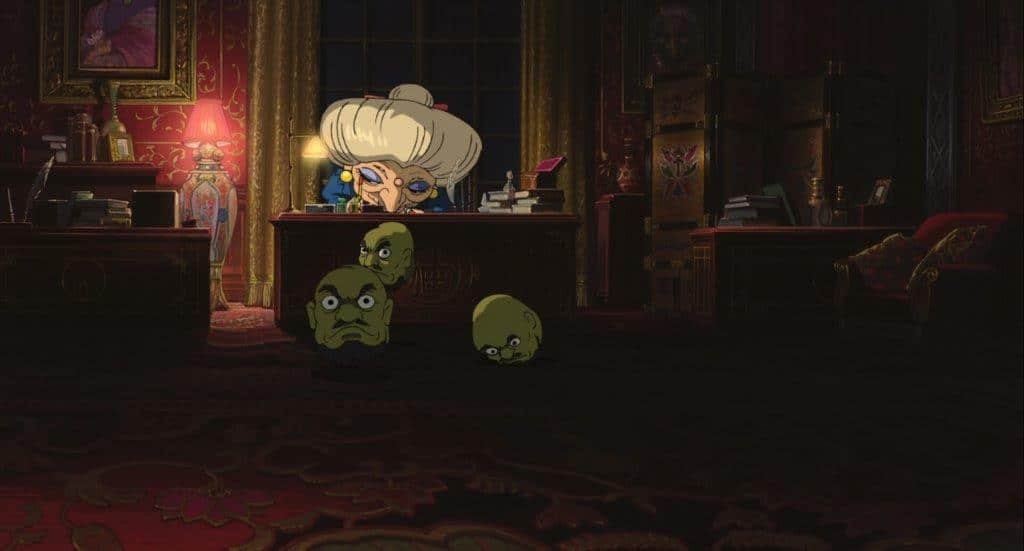
The owner can be seen sitting behind a desk full of books and details that make her even smaller in order to highlight not only her intellect and her dedication but also the hugeness of her head and hairstyle.

Suddenly is presented the highest balcony that is an empty room with a massive crystal shoji illuminated by a tiny lamp that fills the room with the Japan shadows.
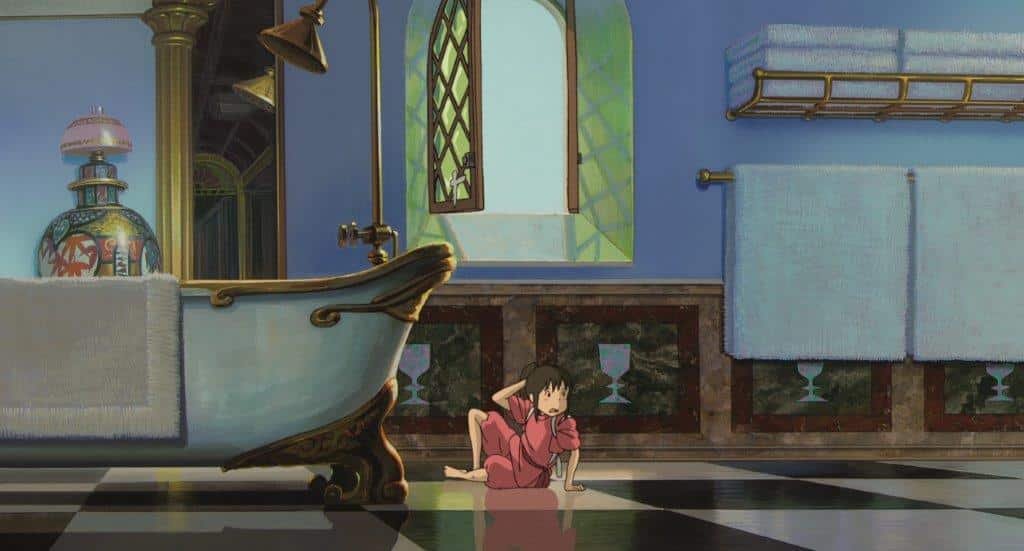
Occidental bath with a checkered floor, water and chalice motifs, once again a mixture of gnostic feelings.
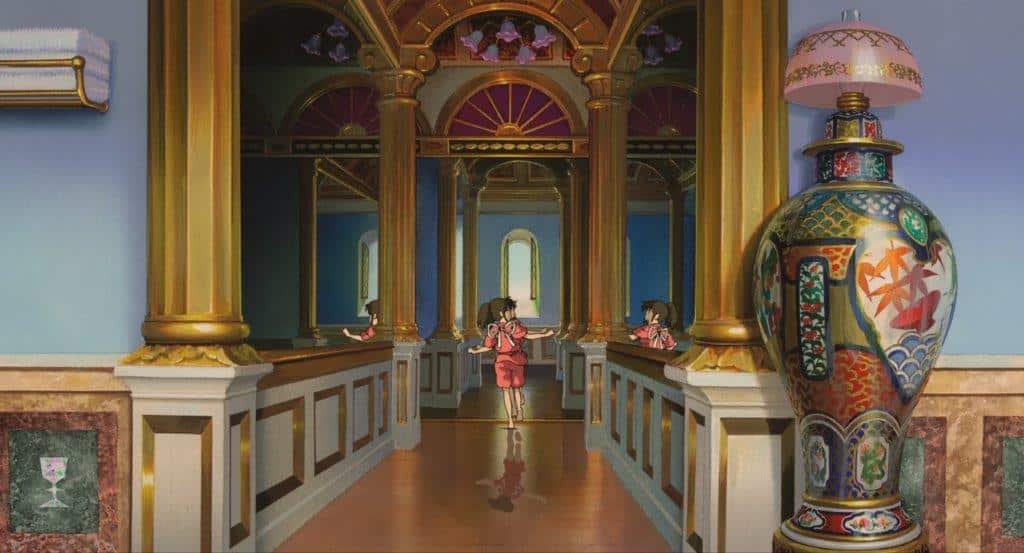
Composed art columns that accompany the crystals in wide corridors generating amplitude and luminosity.
Classic and simple combination of wood covered in white with gold motifs. Similar details can be seen in palaces such as Versailles in France or the Catherine’s in St. Petersburg (Russia).

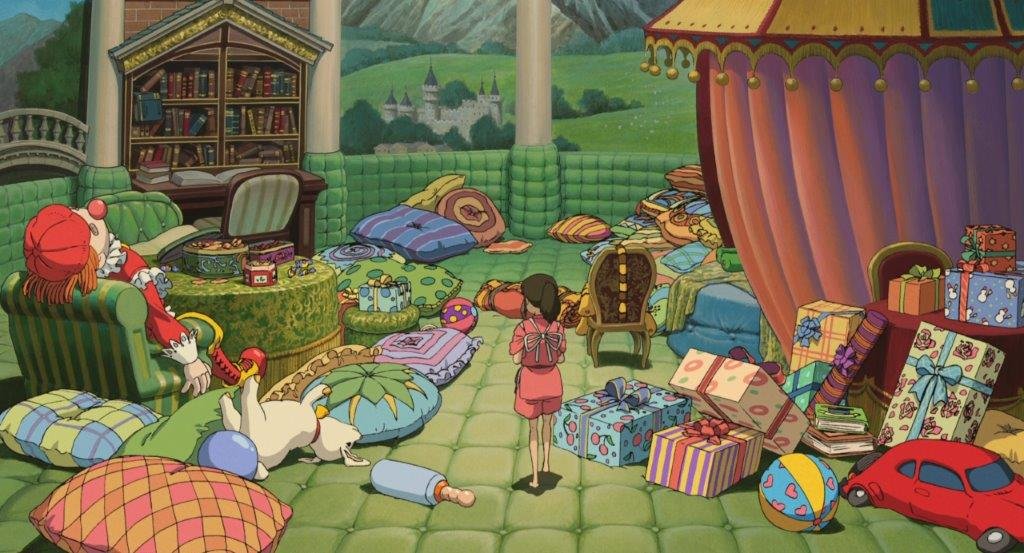
Splendid, suffocating and disturbing, the baby’s room. Padded room on the floor and wall at half height, without windows and with paintings of fairy castles along its perimeter, gifts everywhere and all kinds of game resources that unequivocally denote Yubaba’s excessive love and care for her son.


We landed in Yubaba’s kitchen which, needless to say, is overflowing with well-arranged kitchen implements looking not only ready to receive numerous visitors, given the size of the saucepans and pans, but demonstrating a high degree of meticulousness.
Once again, we come across our magical checkered floor with a matching classic witch’s pot and a series of clearly solid and noble chests of drawers. An interesting detail of the copper selection for the pans.

Zeniba’s House
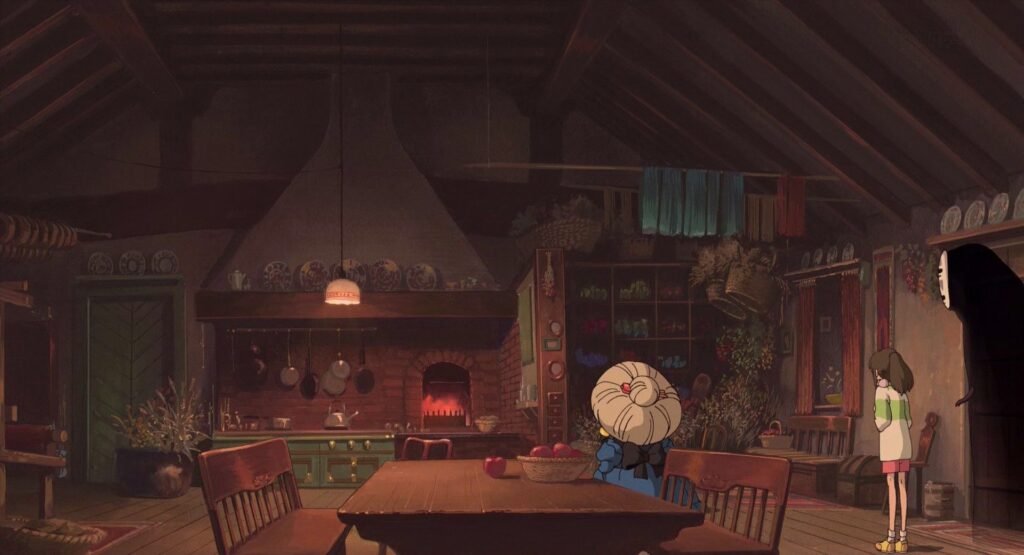
The house is humble and functional, with little light and concentrating the main rooms in a single room that covers two thirds of the house.

Artistic References
Ginzan Onsen: Undoubtedly a source of inspiration for anyone. One could well identify influences in the work of the Bathhouse in the film, not only on the facade but also on the interior balconies.

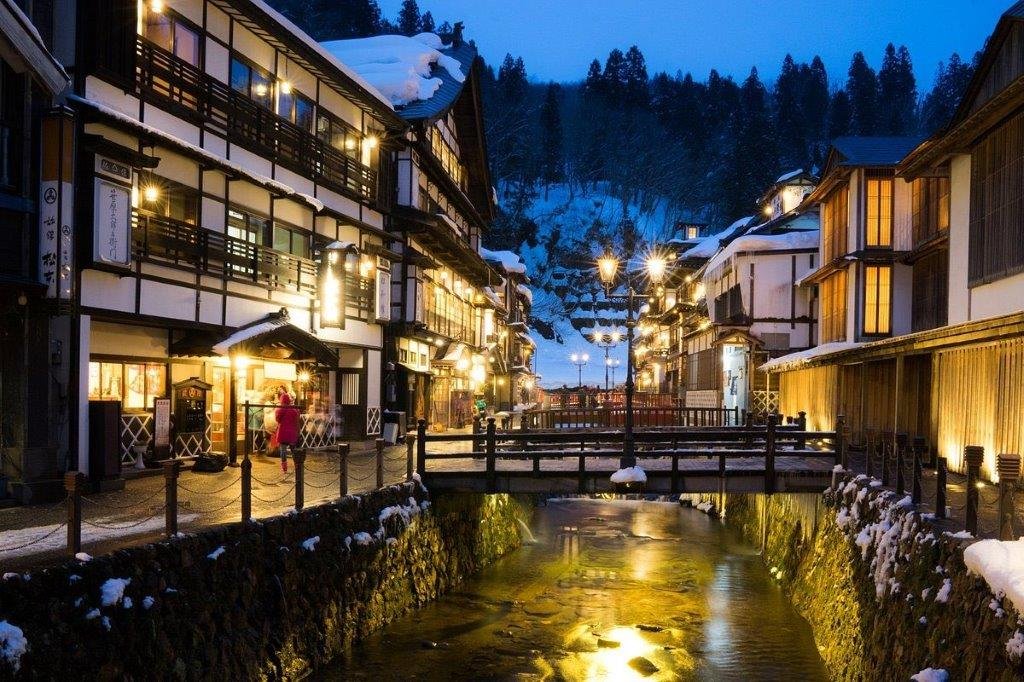
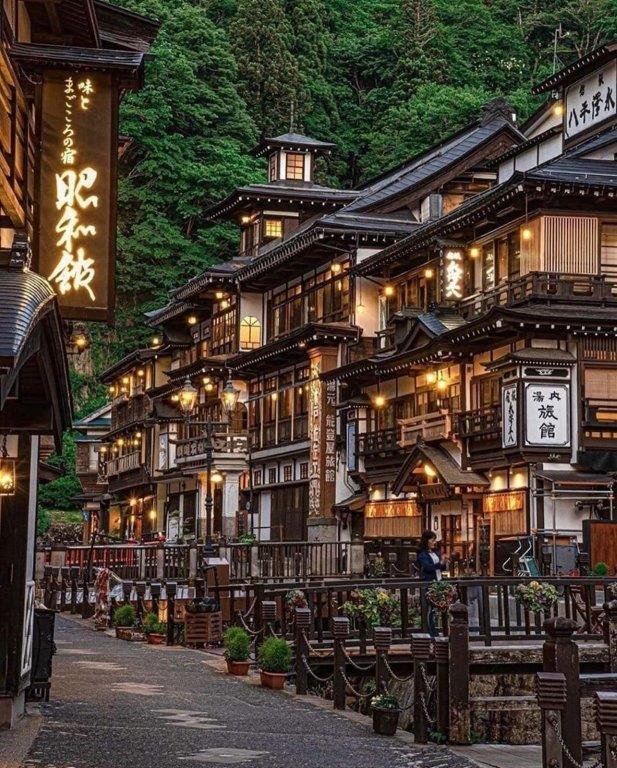

Dogo Onsen Honkan: This Onsen has been confirmed as one of the sources of inspiration for the Bathhouse. It seems to be more than 1000 years old being the oldest in all of Japan.



Next, we observe the detail of the bathrooms, as suggestive as minimalist that make good use of rounded shapes in perimeters and water tanks.

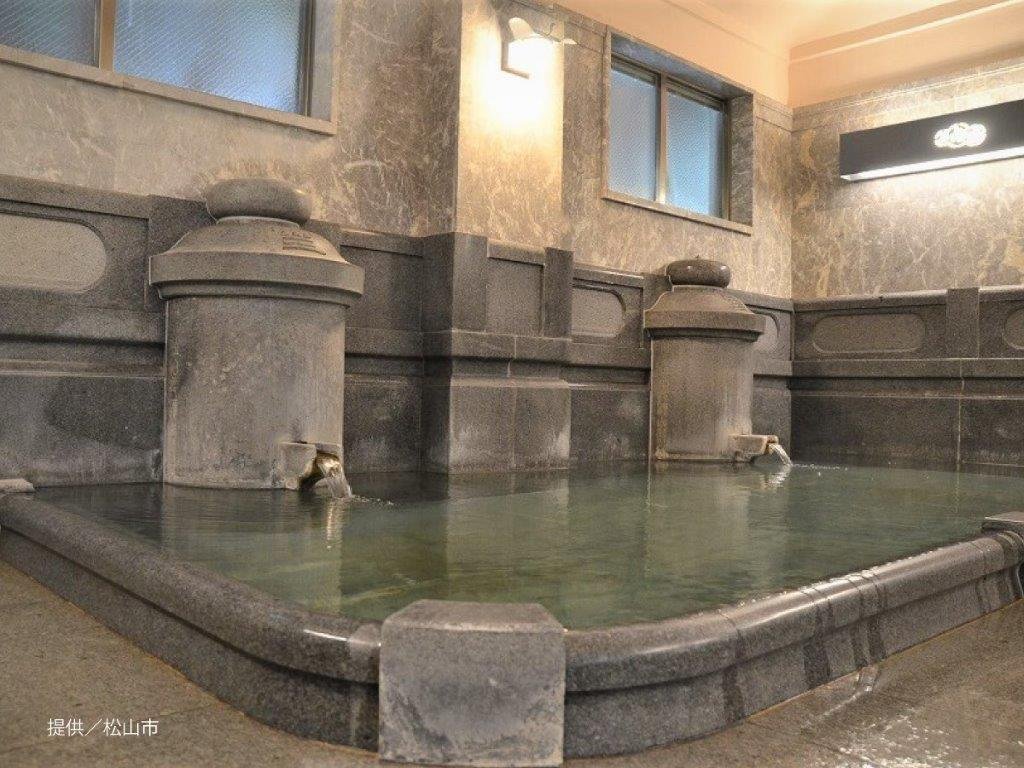

Jiufen, Taiwan: City built by the Japanese in Taiwan in the early 20th century that may well have been a source of inspiration for the villa that is next to the Bathhouse.

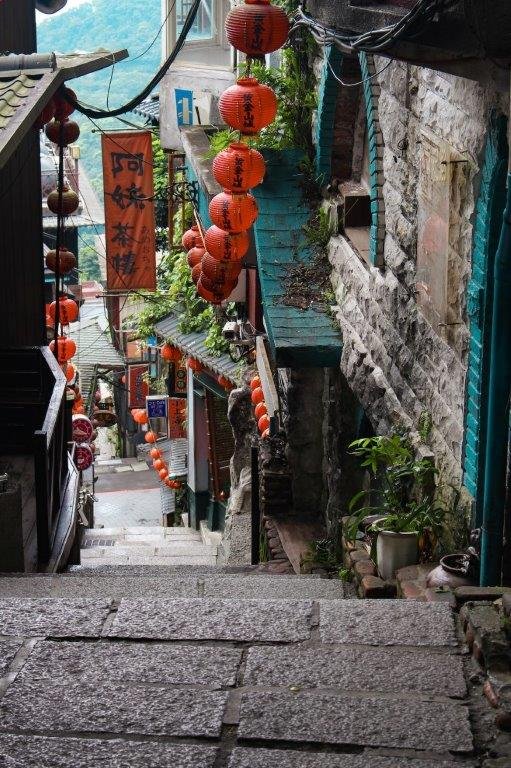
Kanaguya, Shibu Onsen: Nagano prefectural spa that could have been used as a source of inspiration. The complex dates back more than 200 years.

Sekizenkan, Shima Onsen: We found other possible influences in this spa that owns a bridge with certain similarities to the one in the movie.
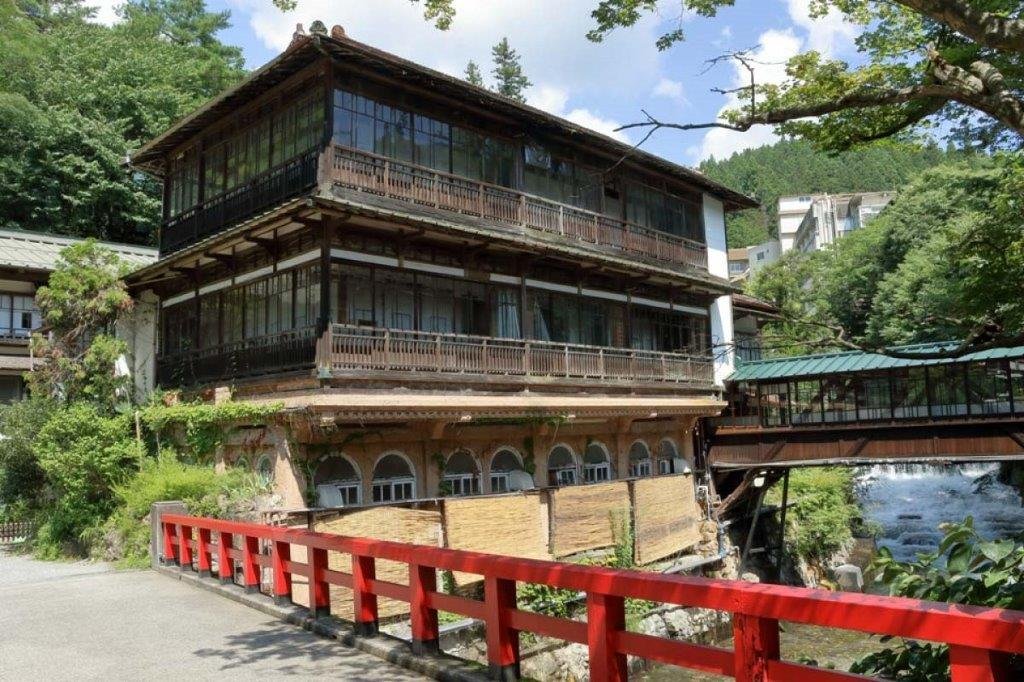

Next, we have two Japanese bathrooms that give us some clues of rooms and habits that could influence in some way the artists who contributed to the film
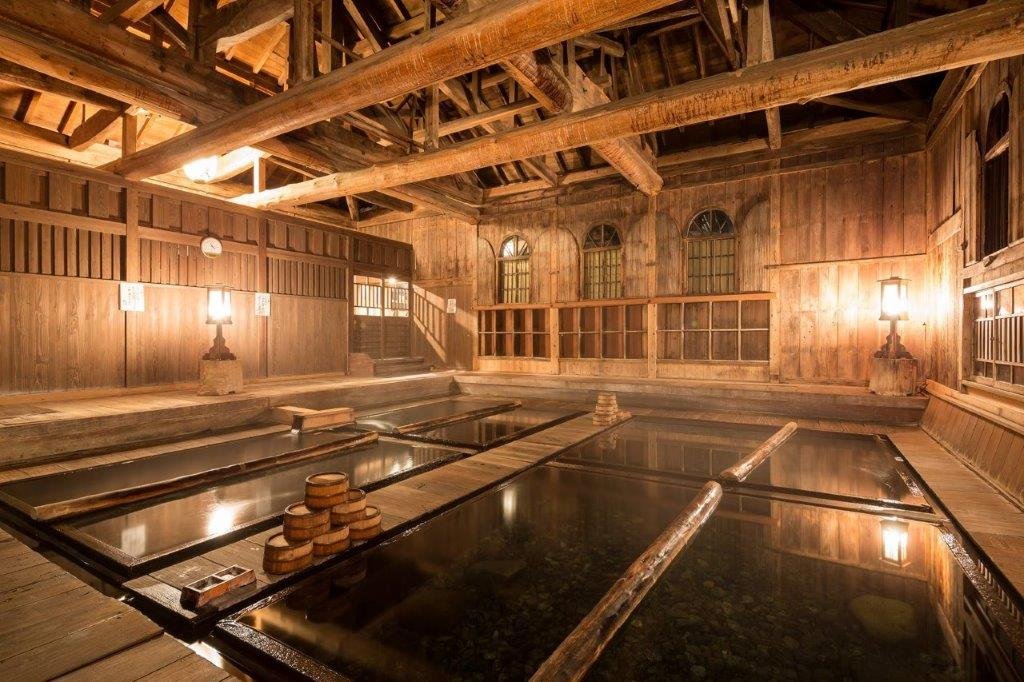
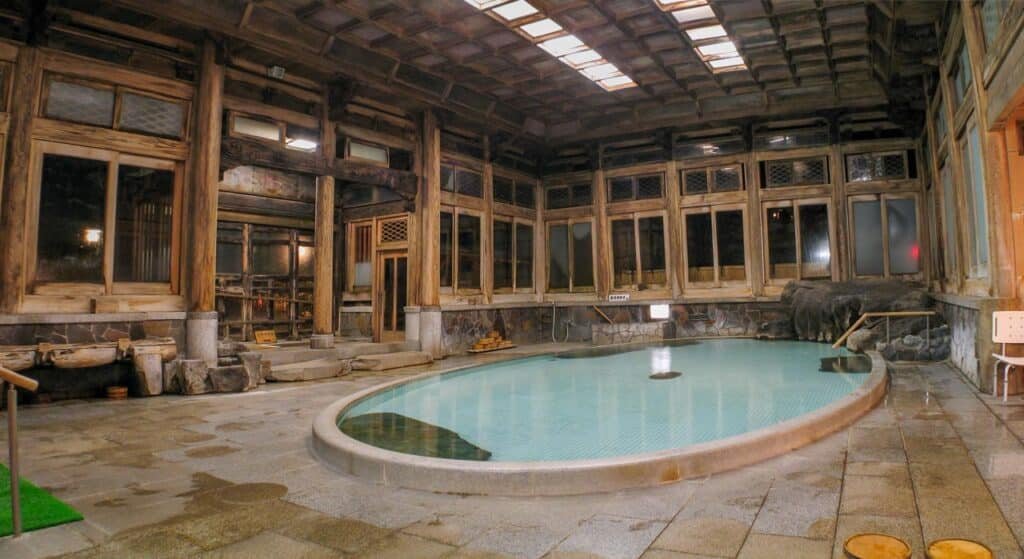
Versailles Palace (France): We found similarities with this palace when we visited the Yubaba’s rooms. What do you think?.
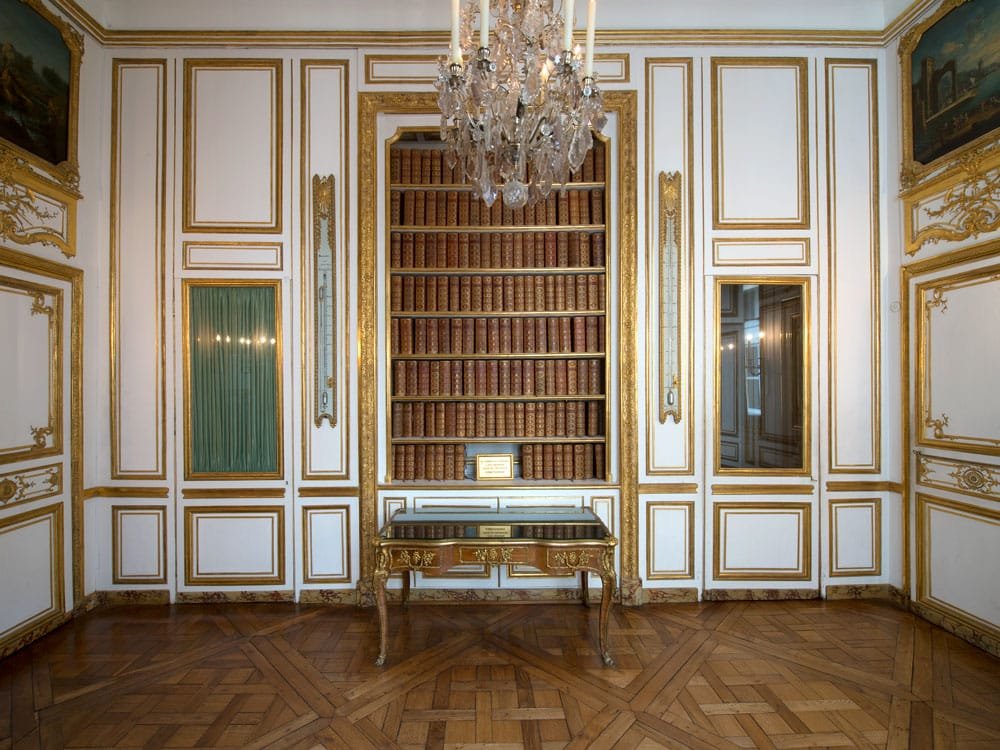
Catherine Palace, Amber Room (Rusia): Rococo palace that comes to our mind at some points of the movie.
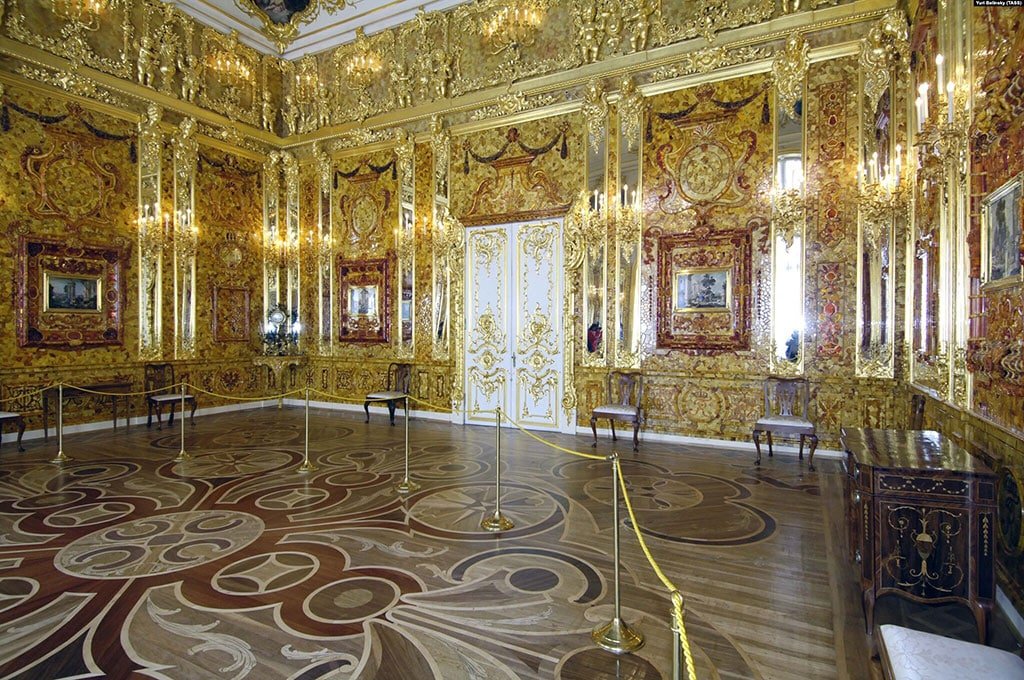
What do you think about these environments? …Leave us yours thoughts in the comments section below.






